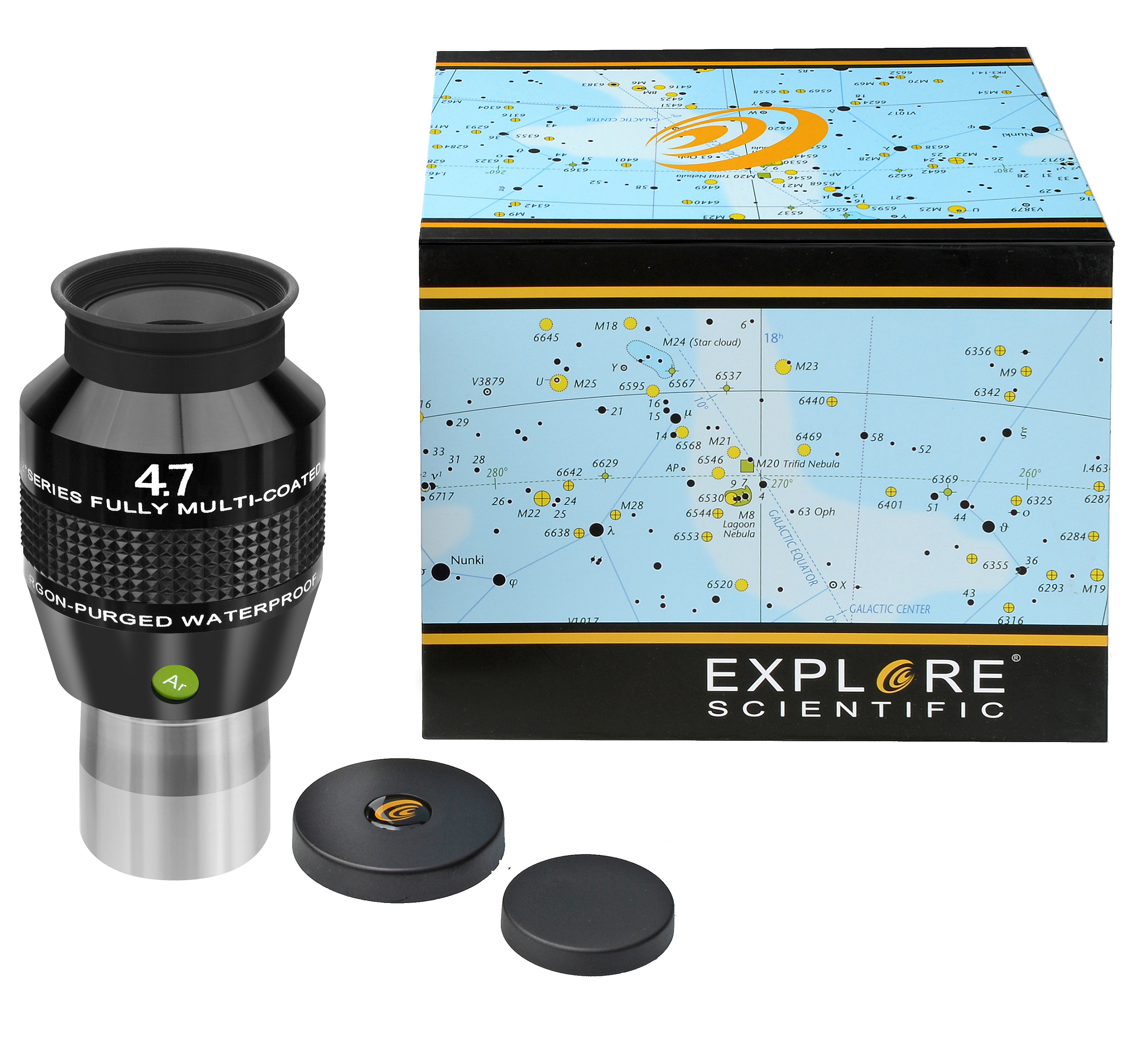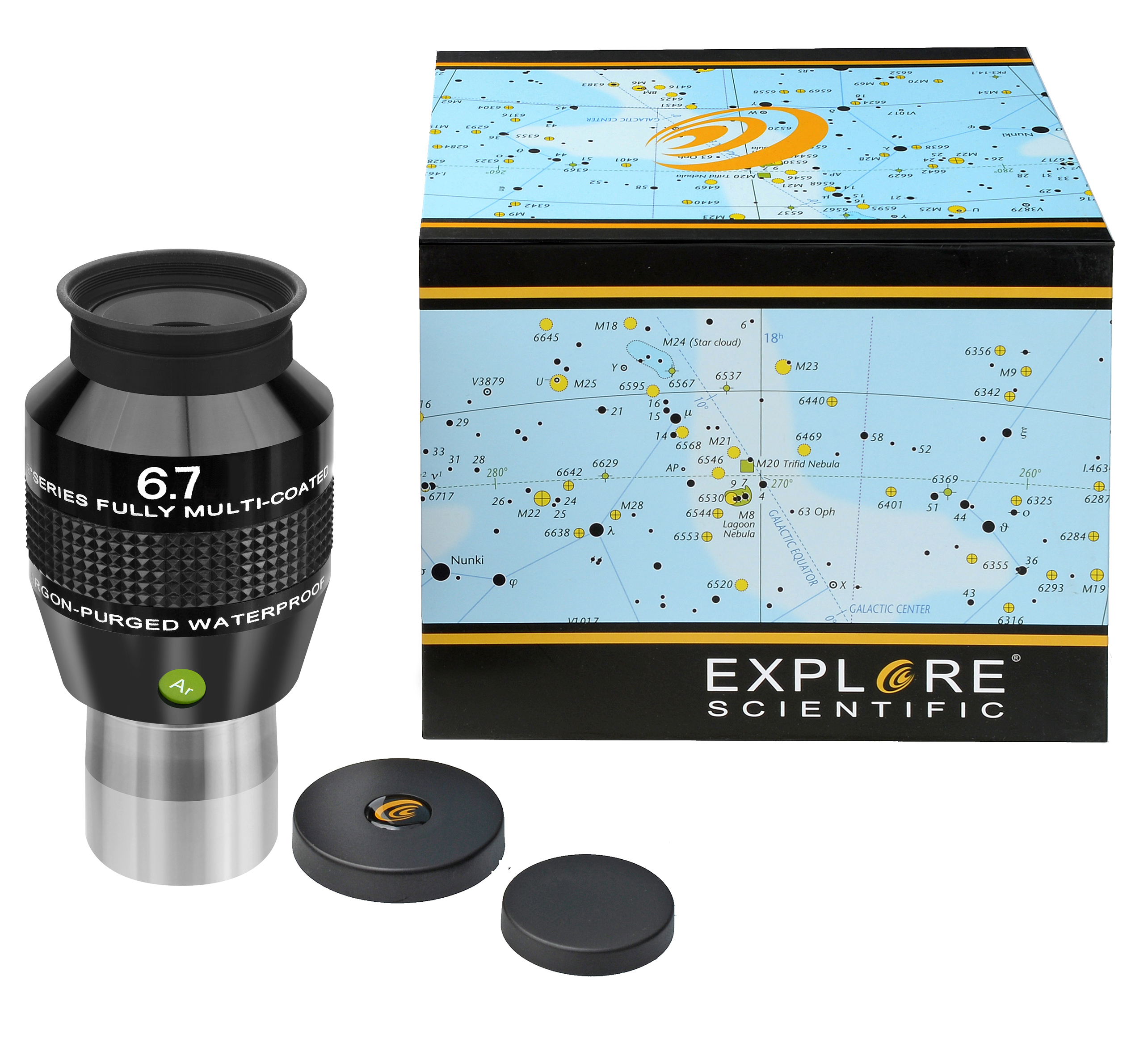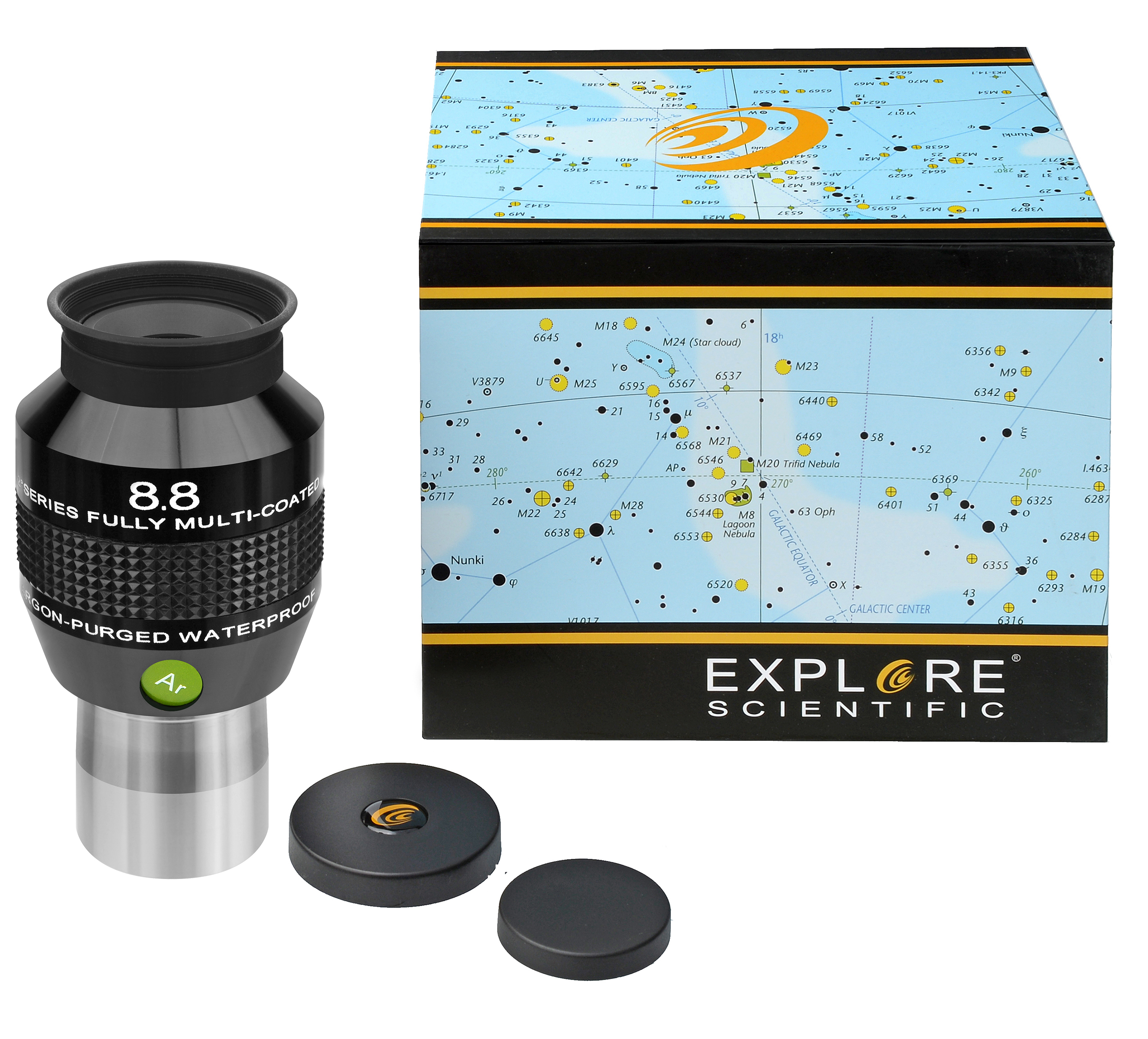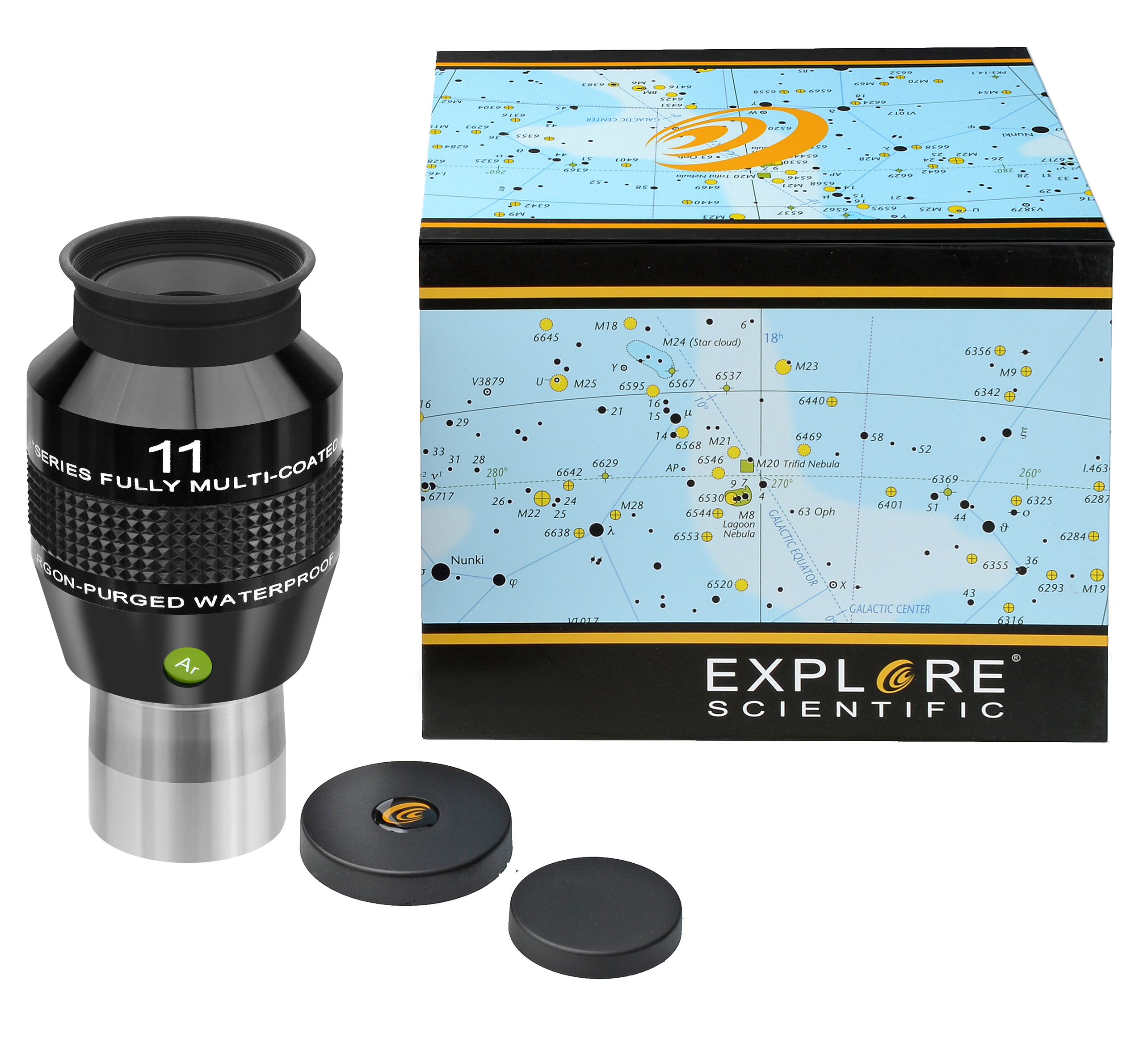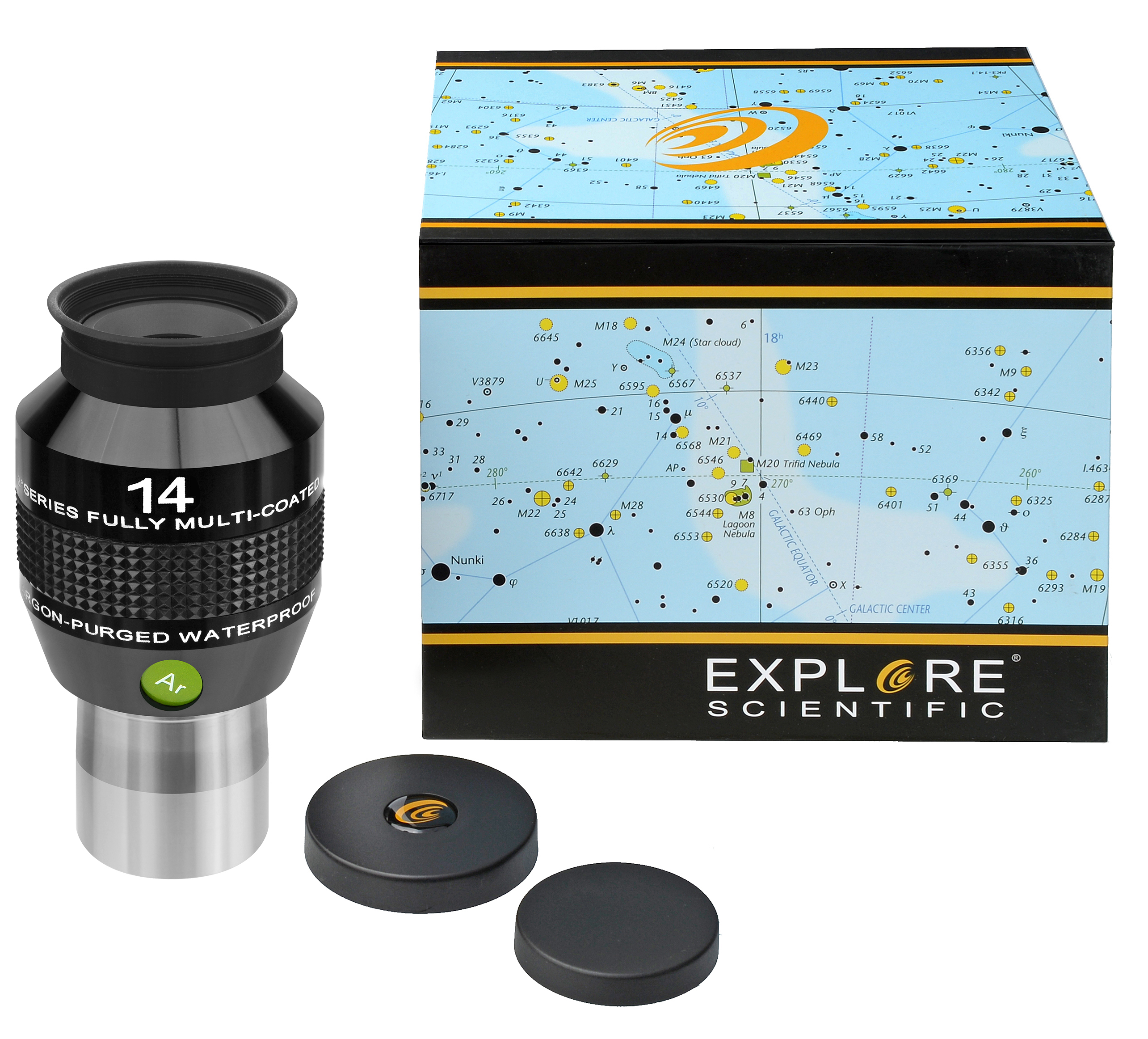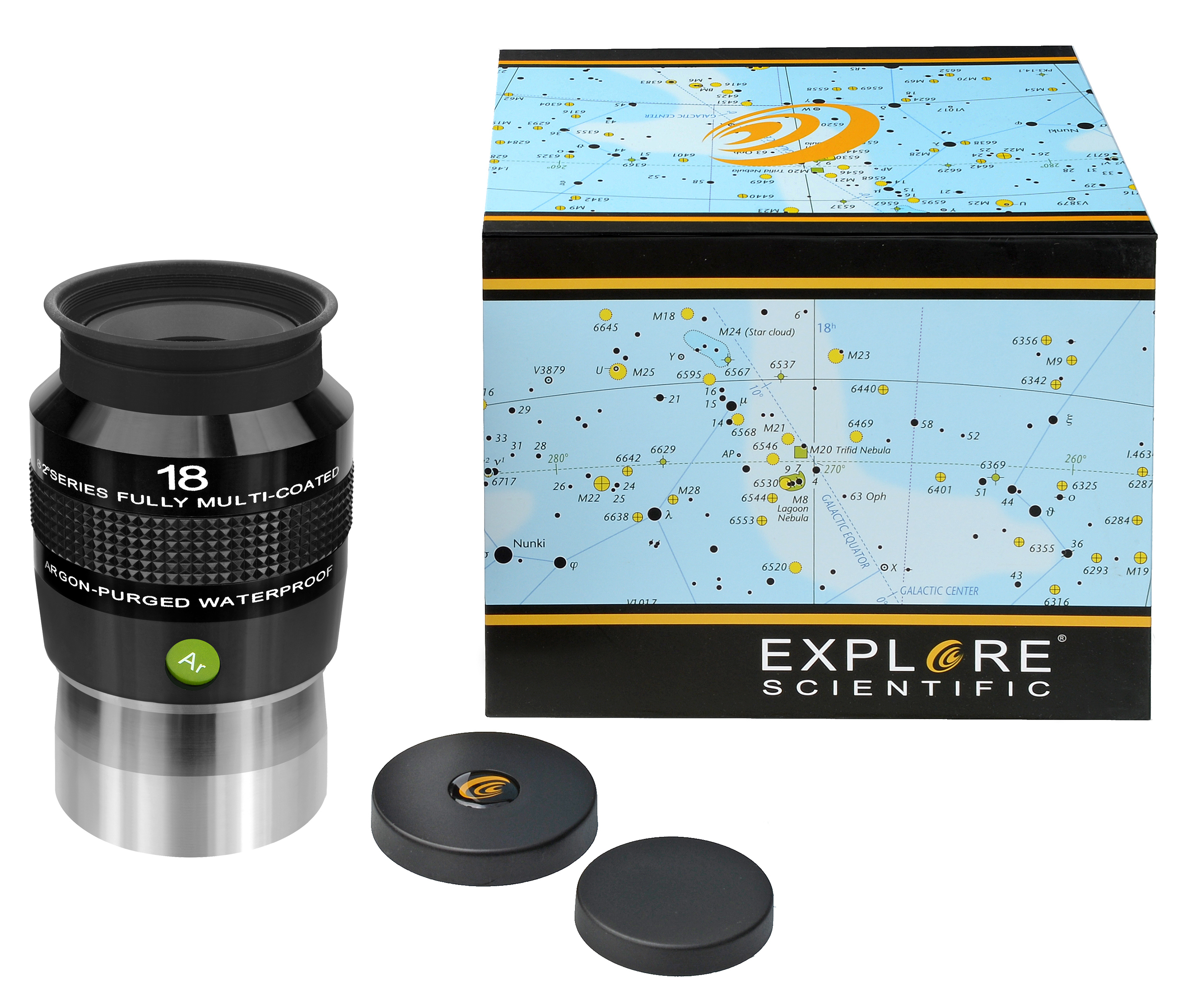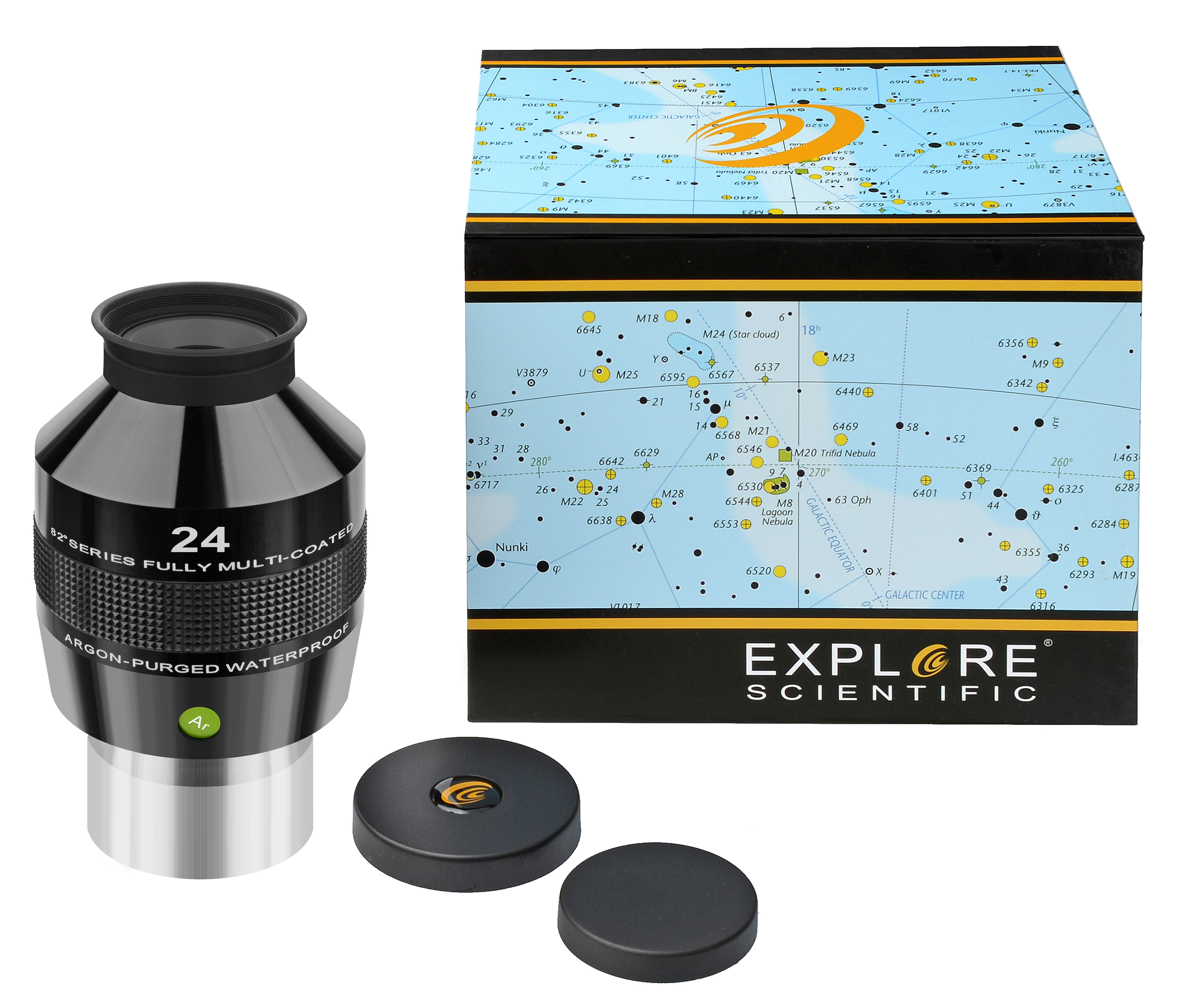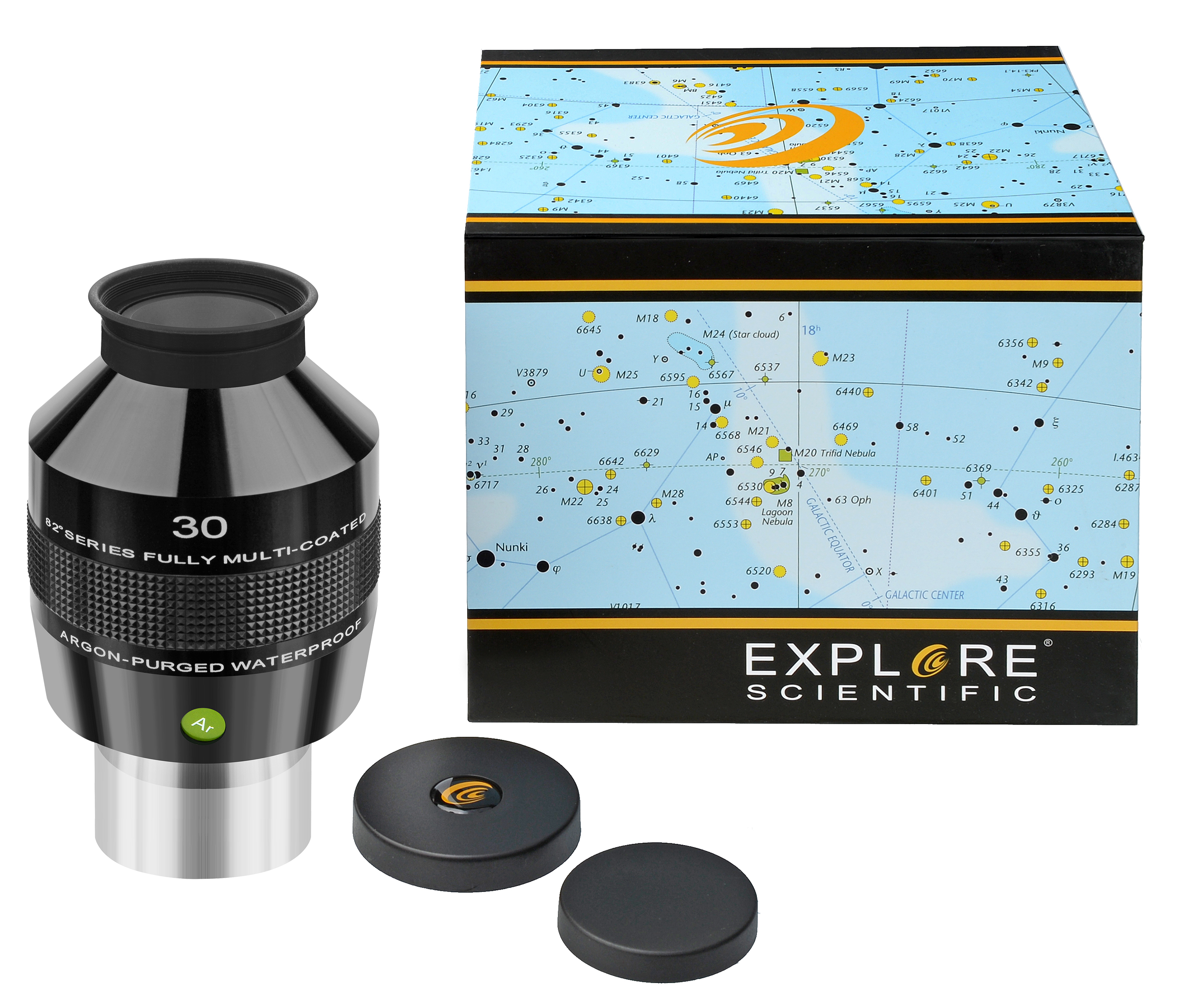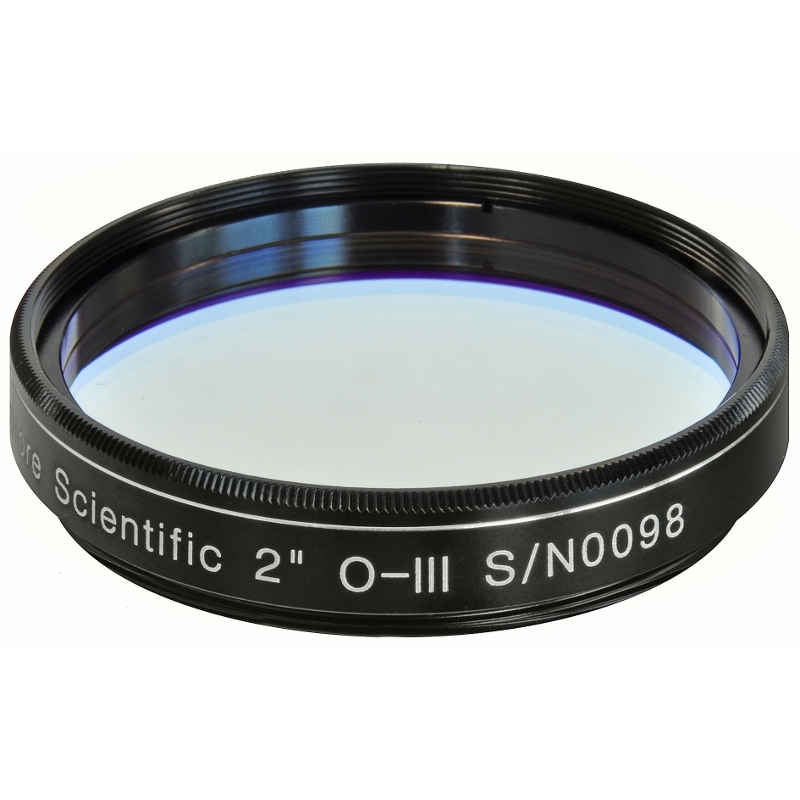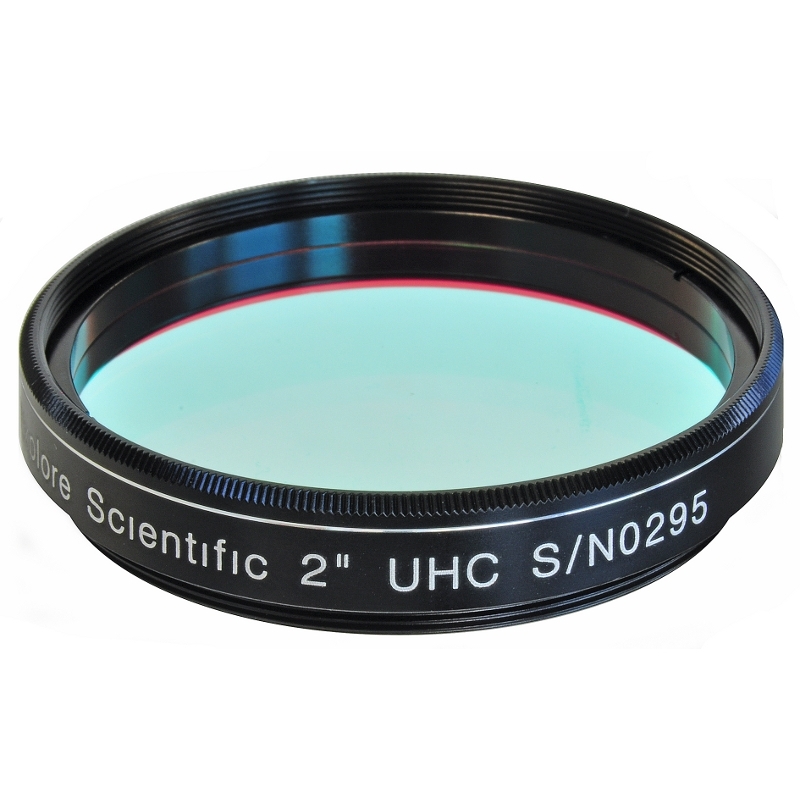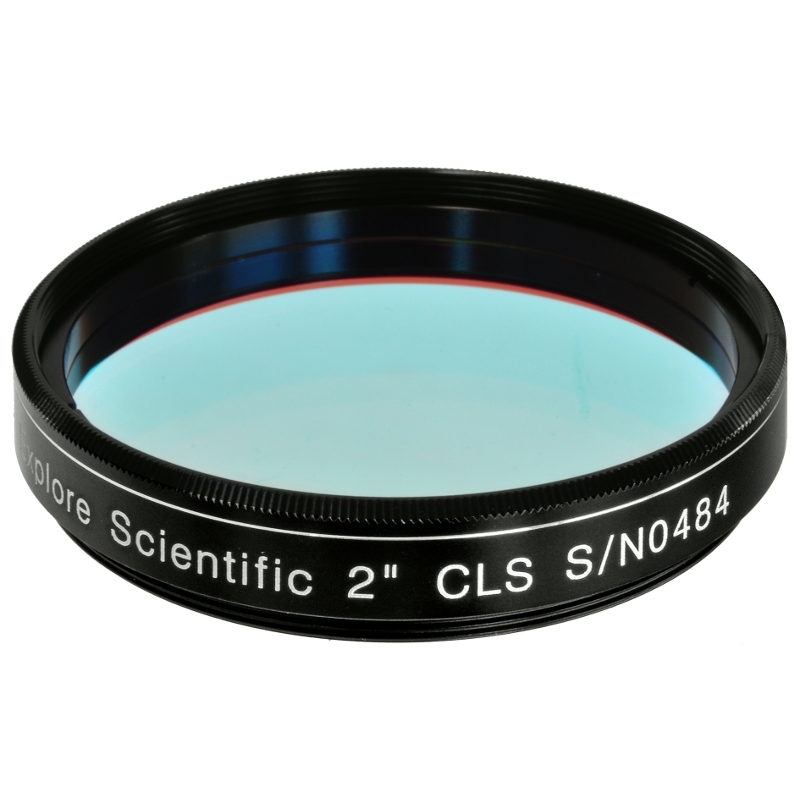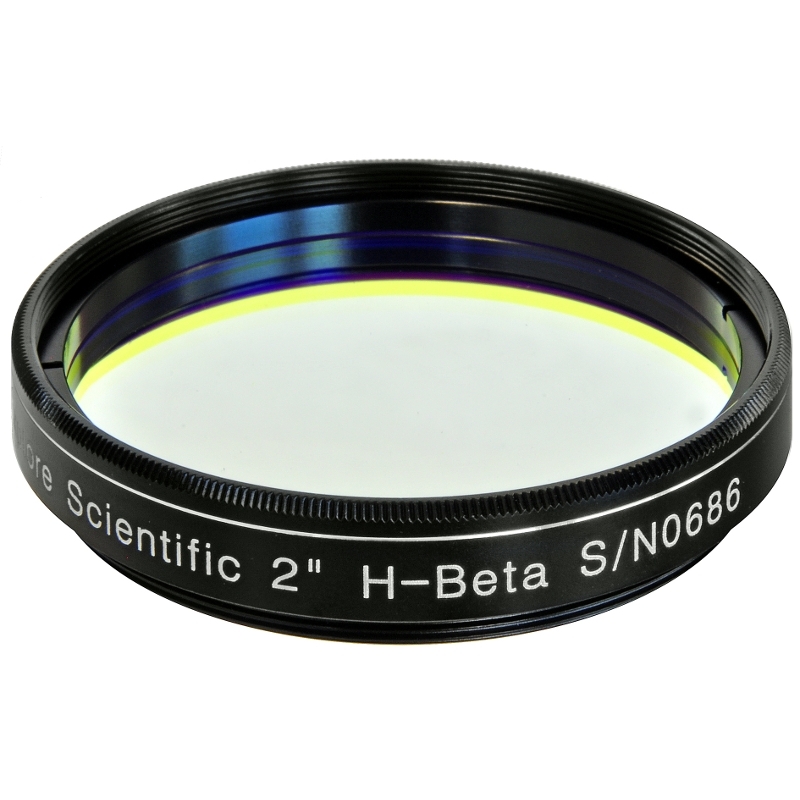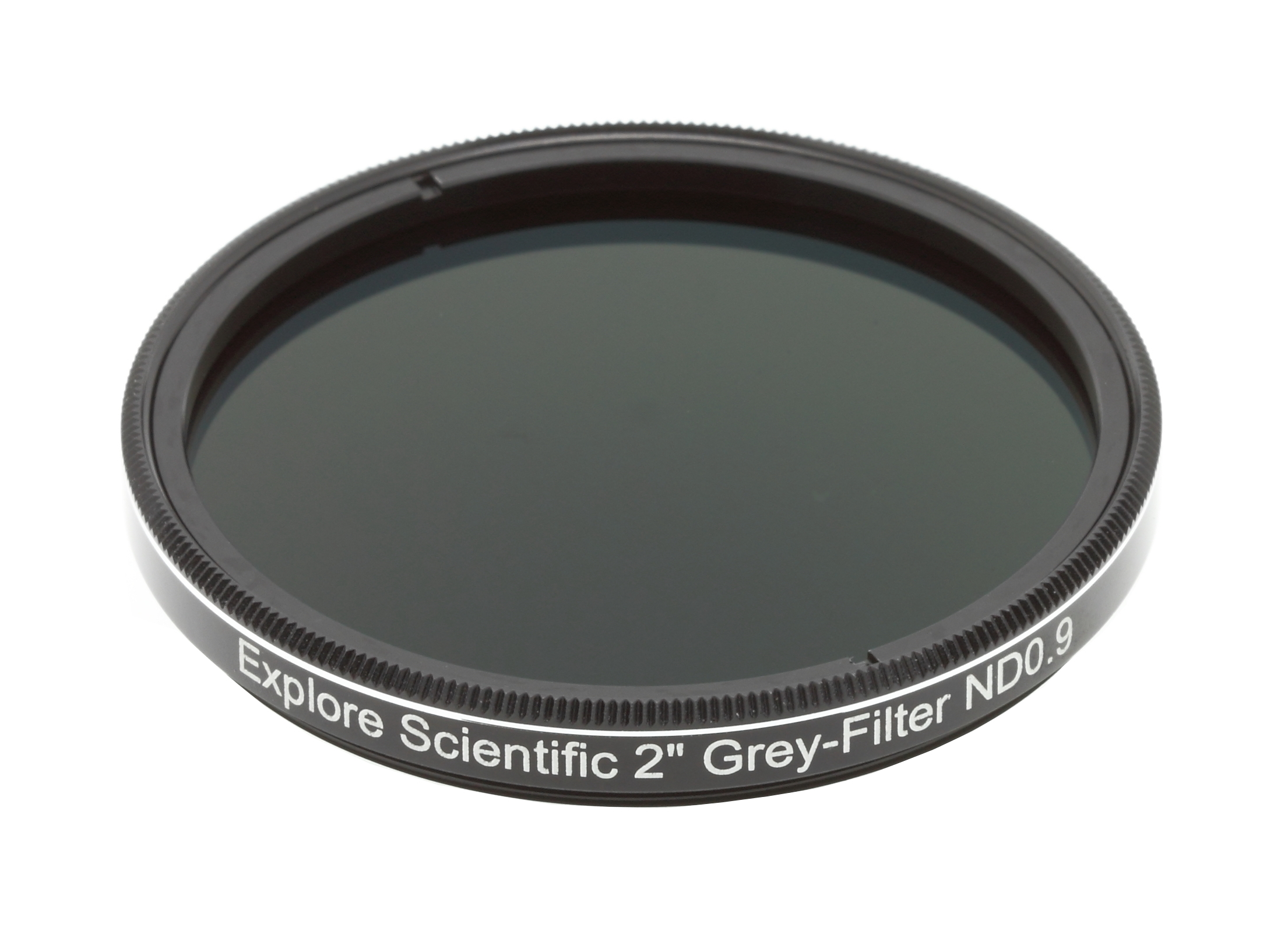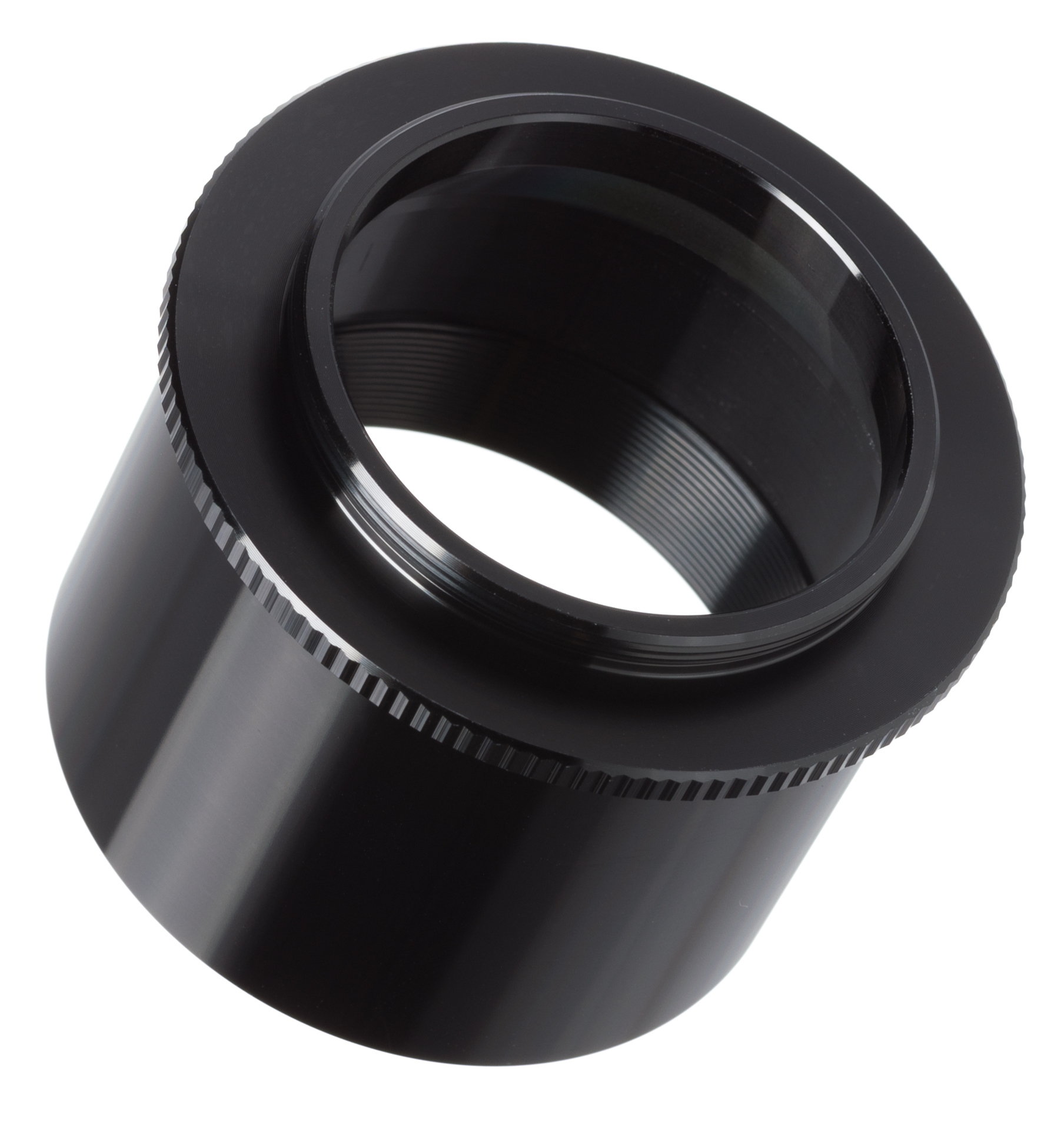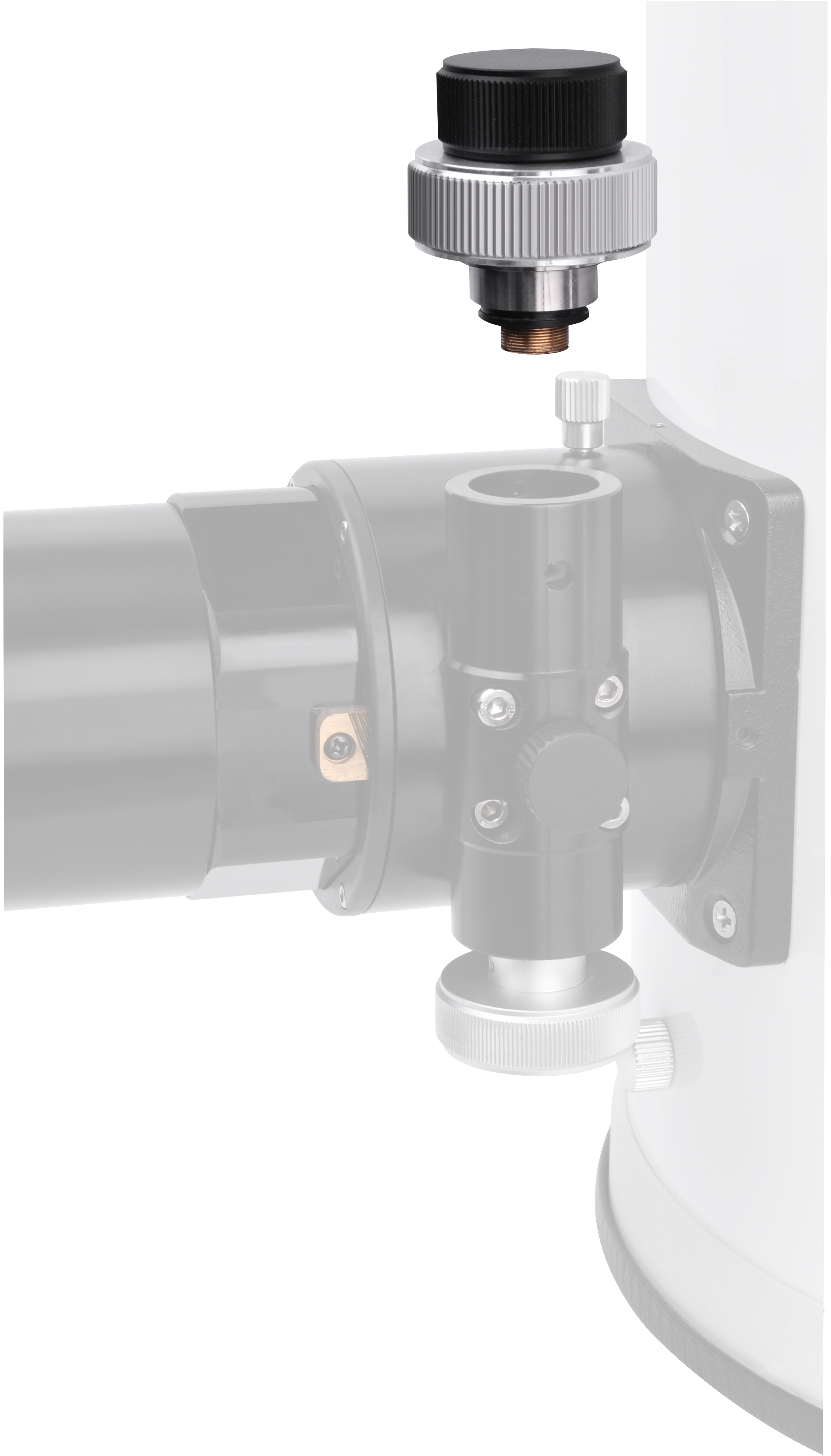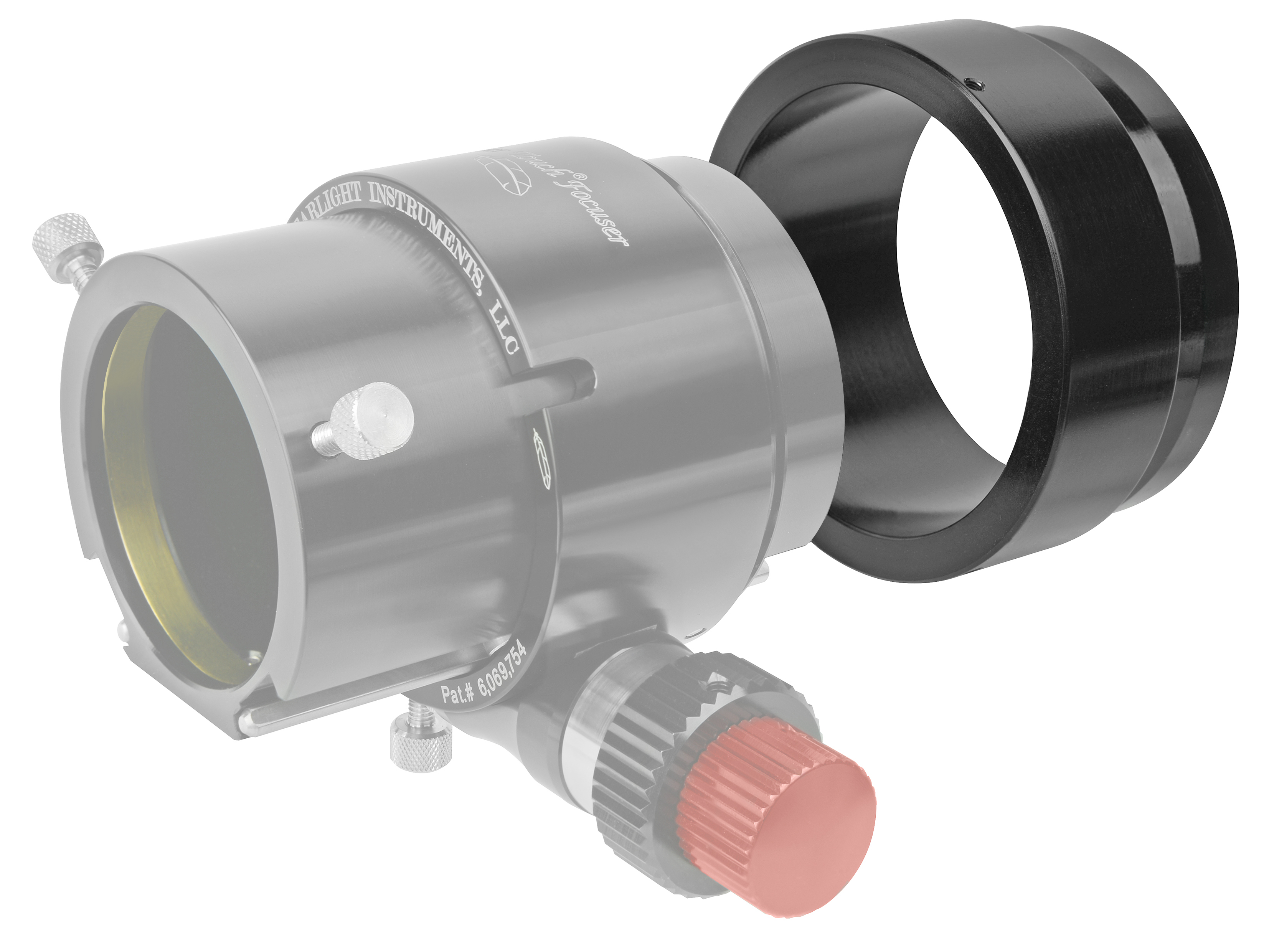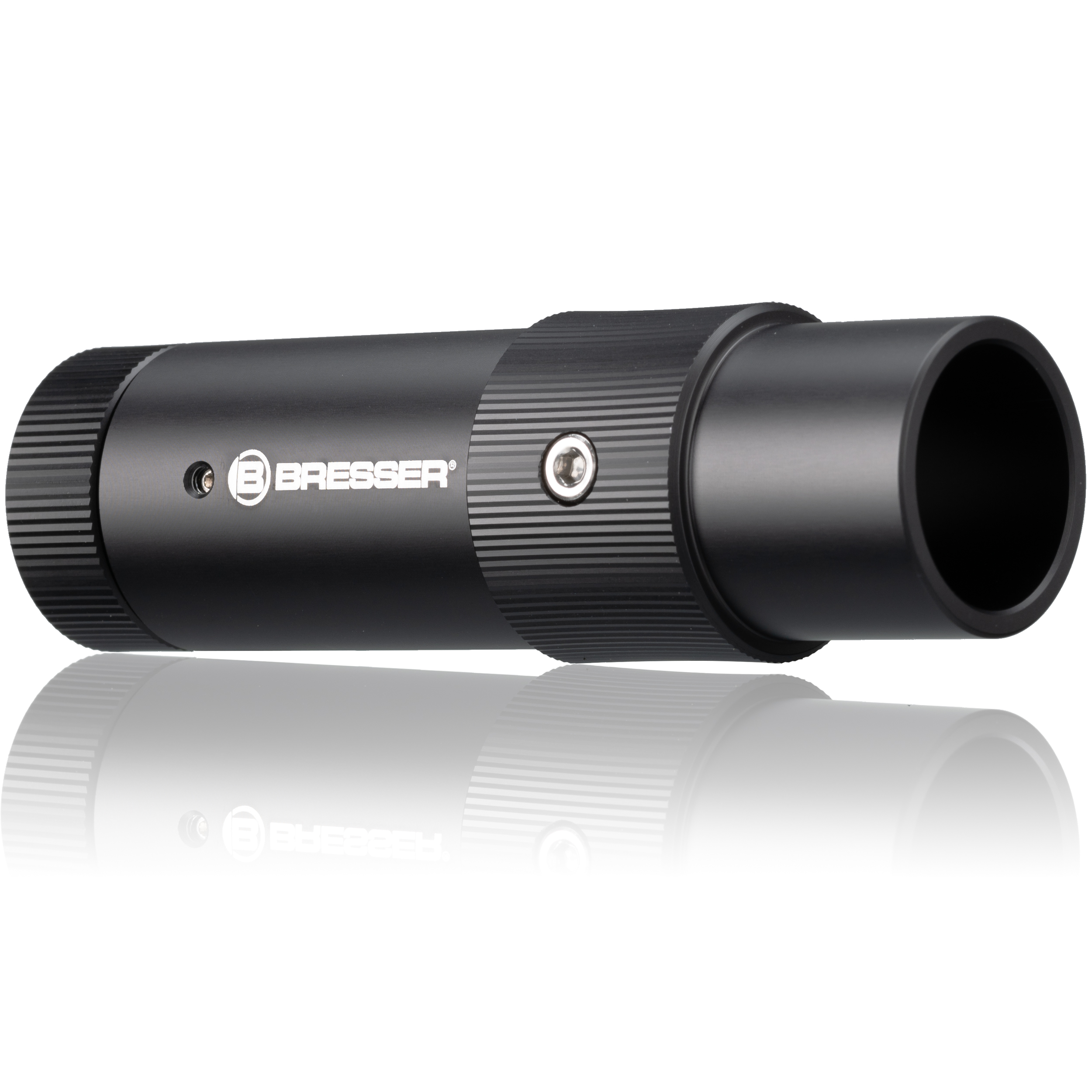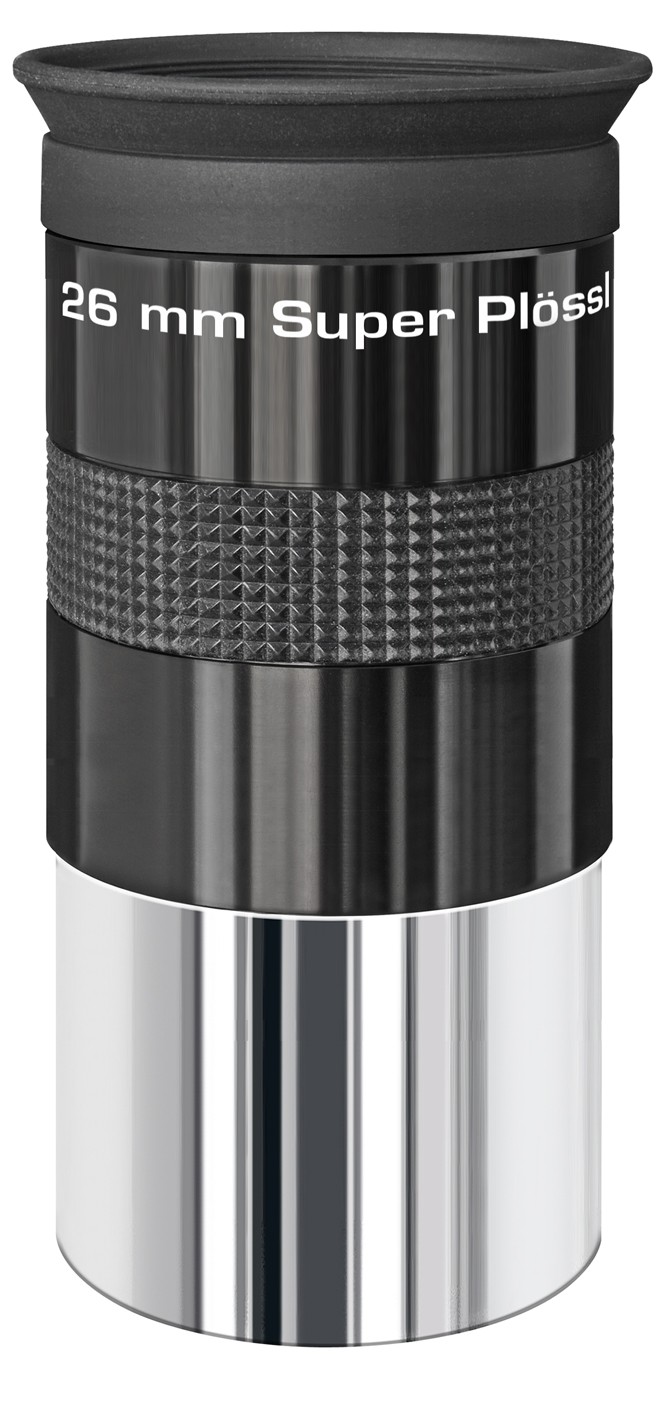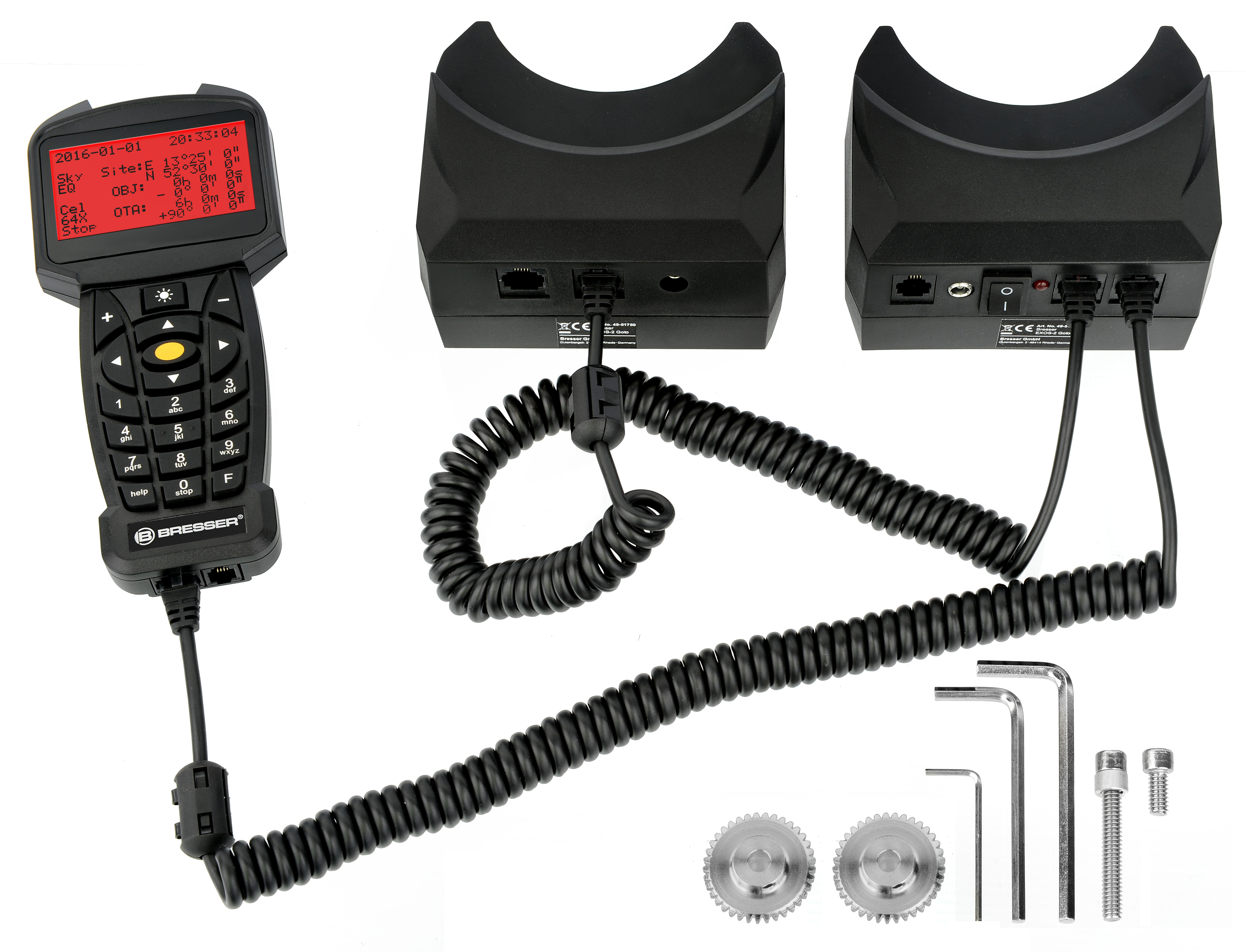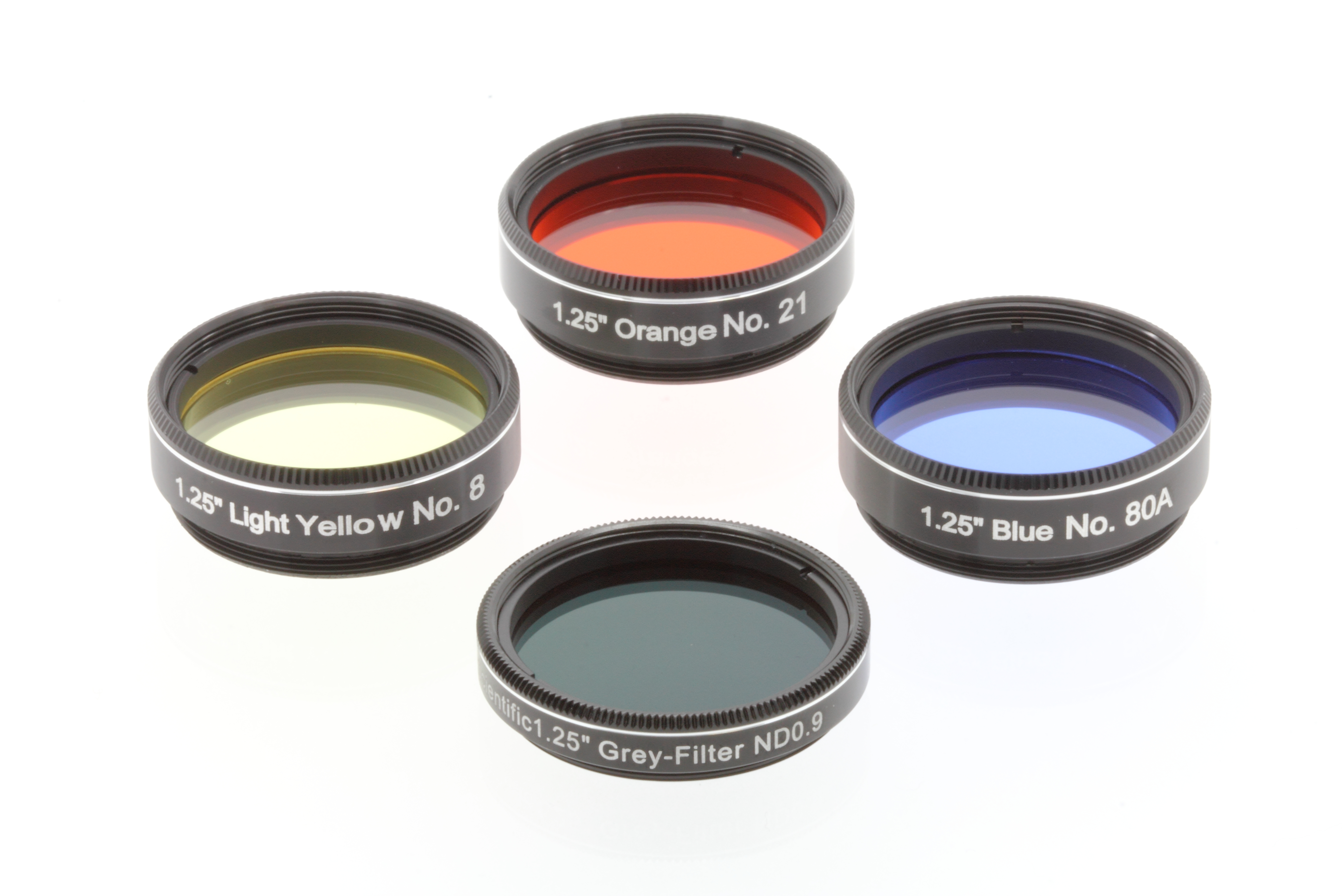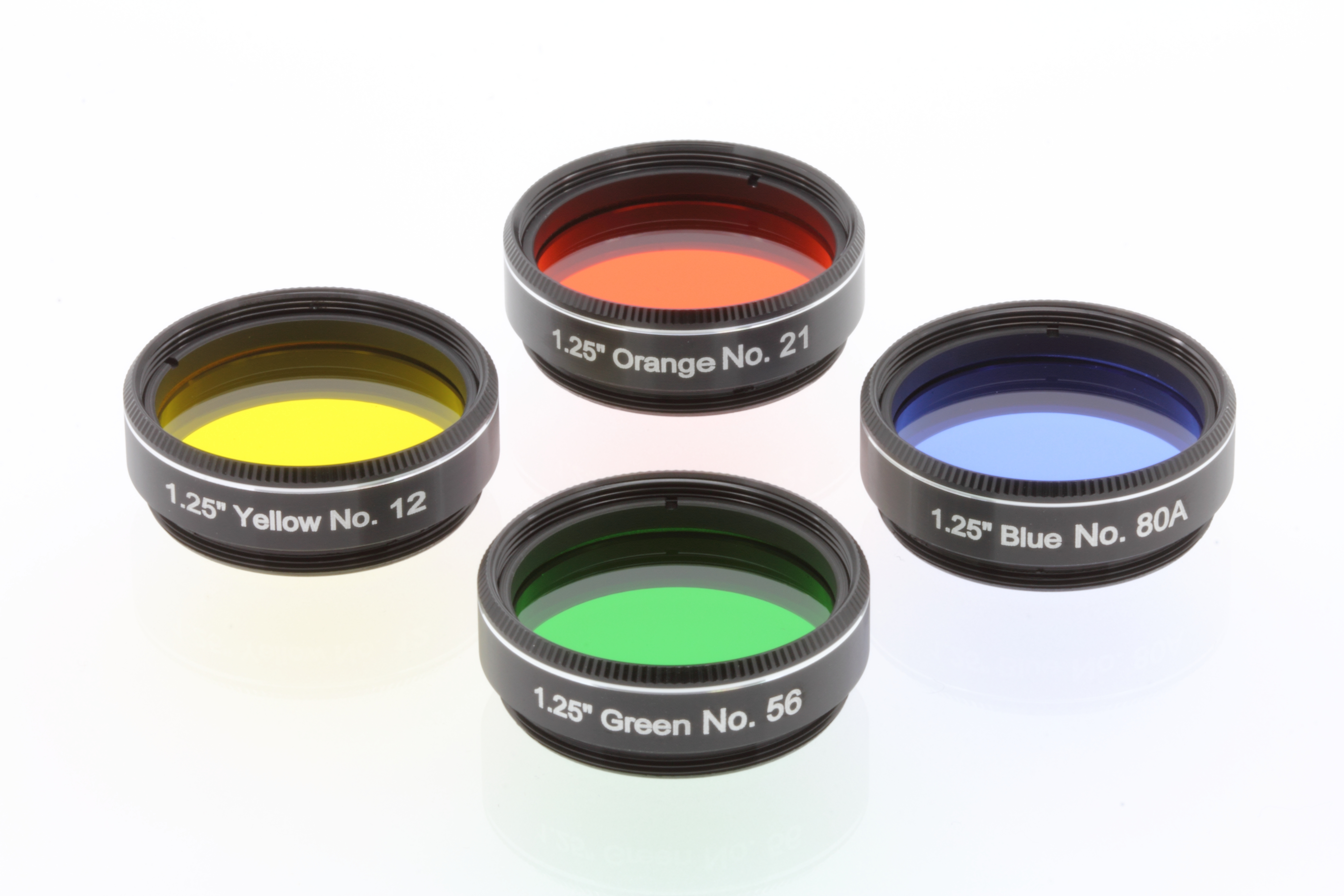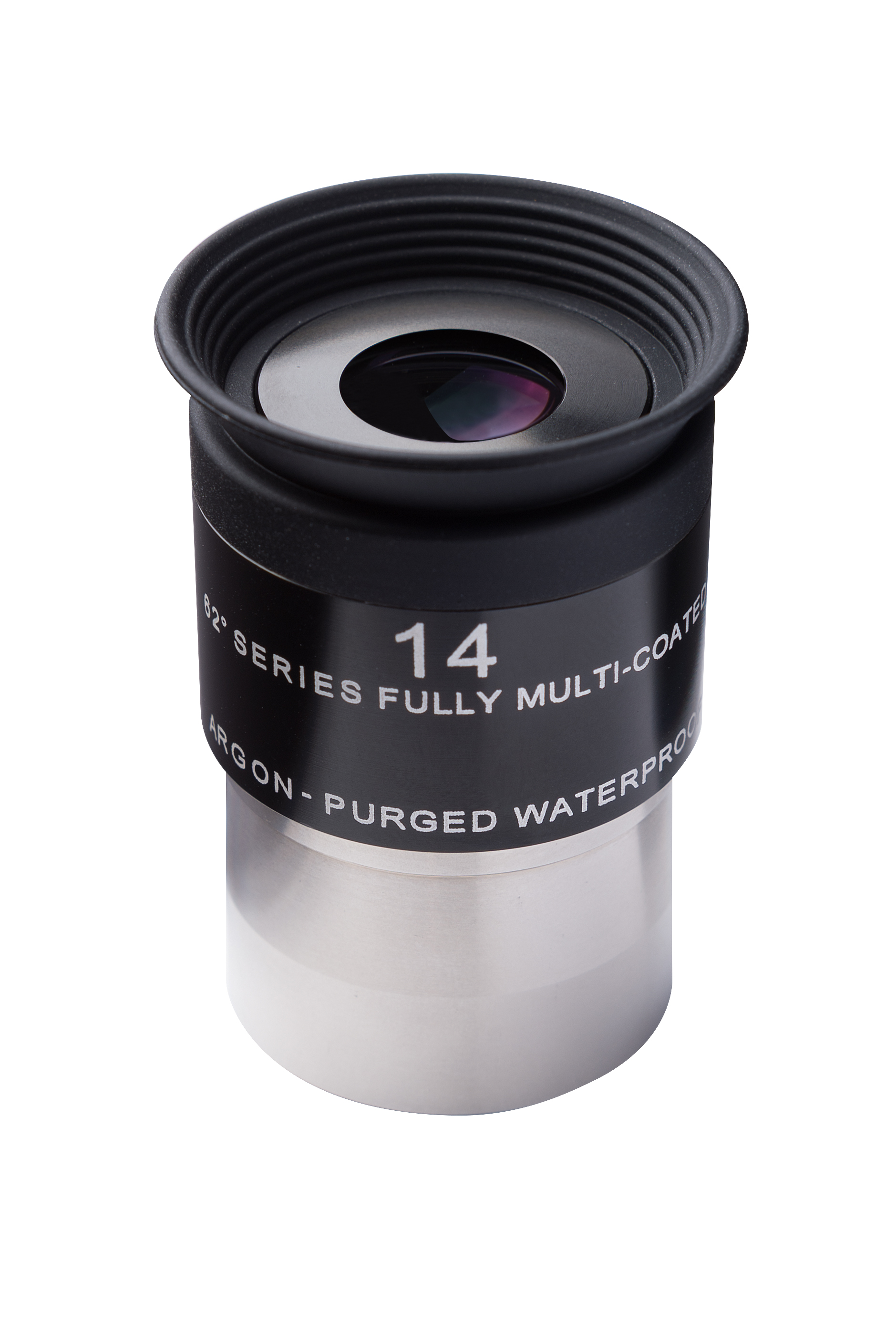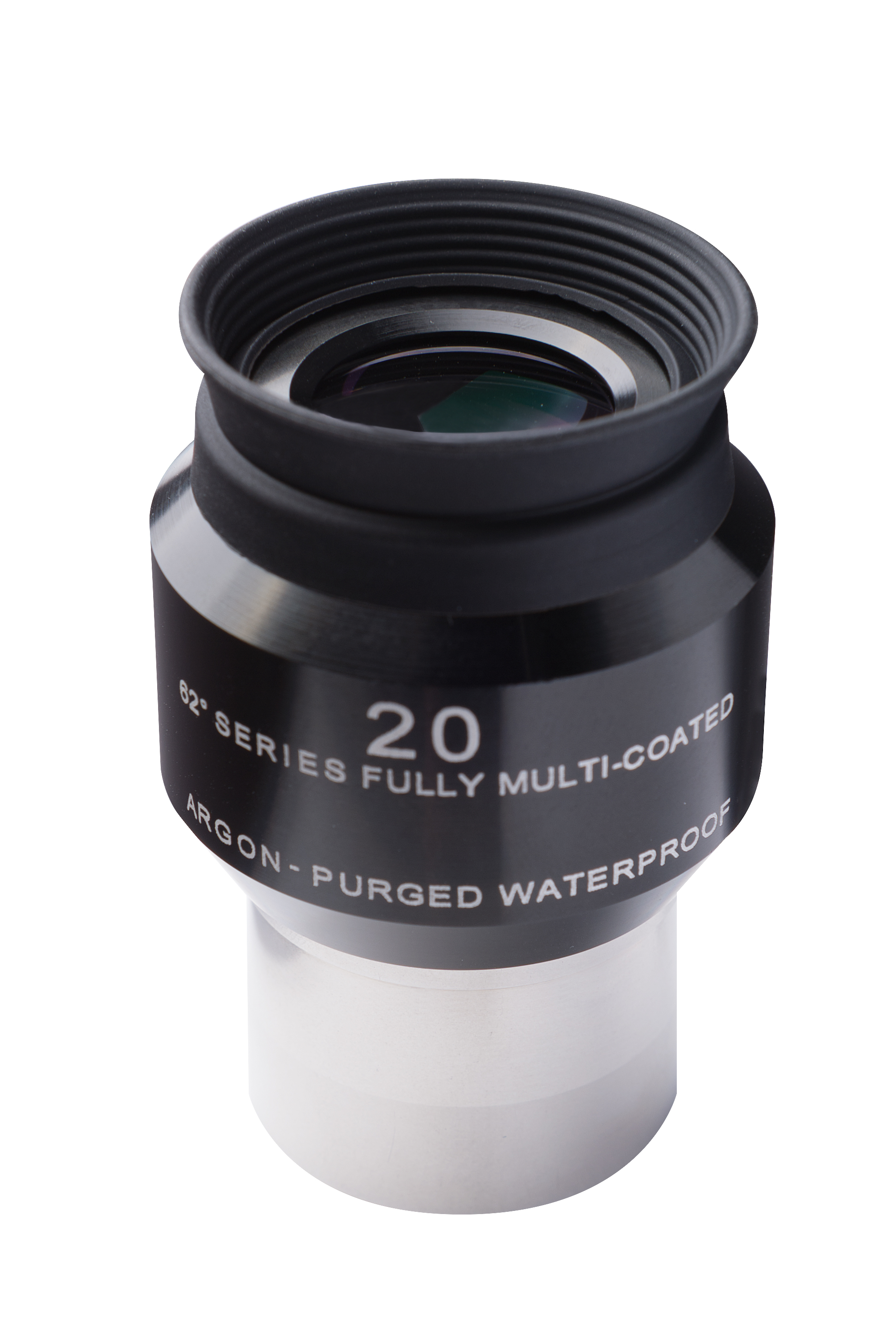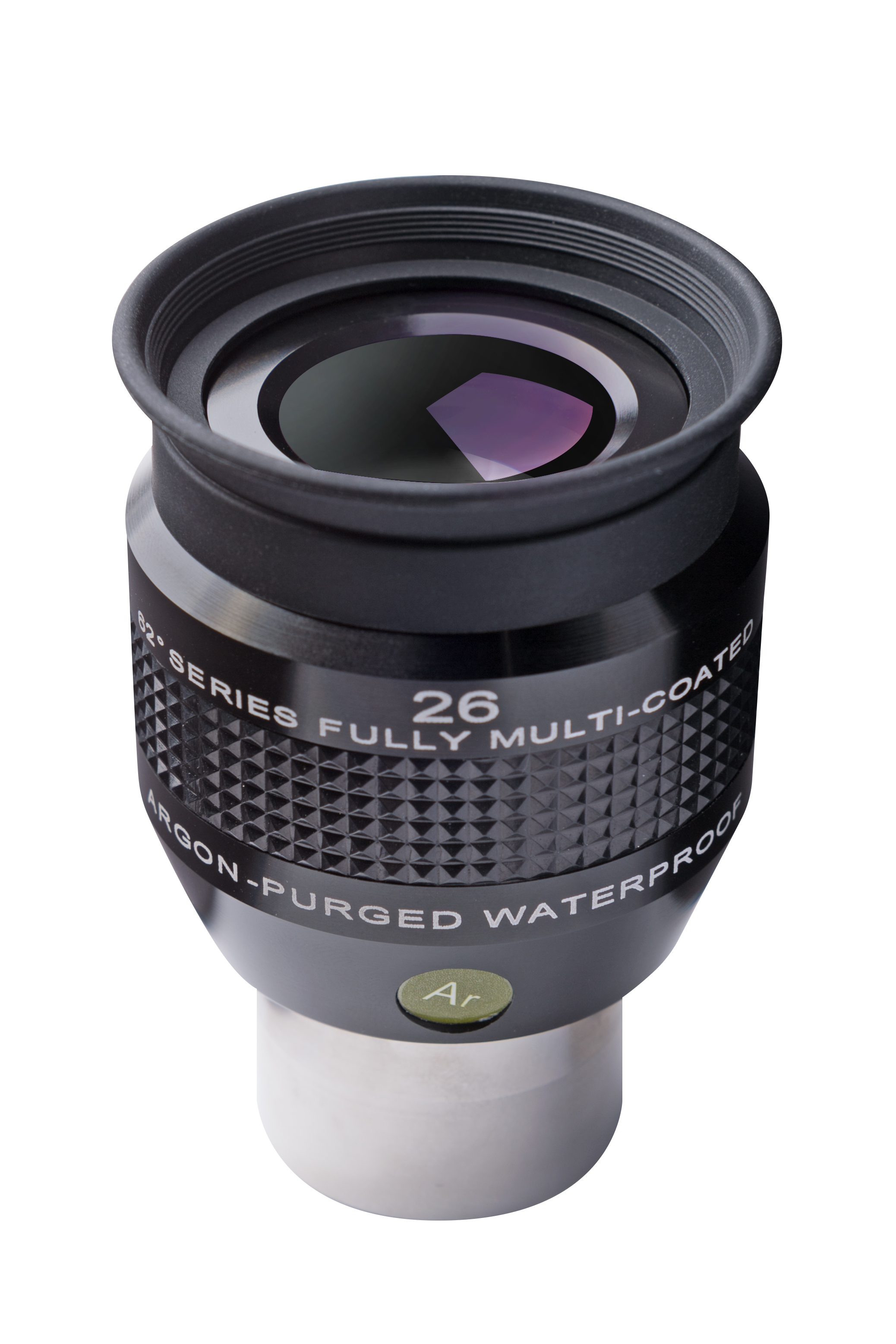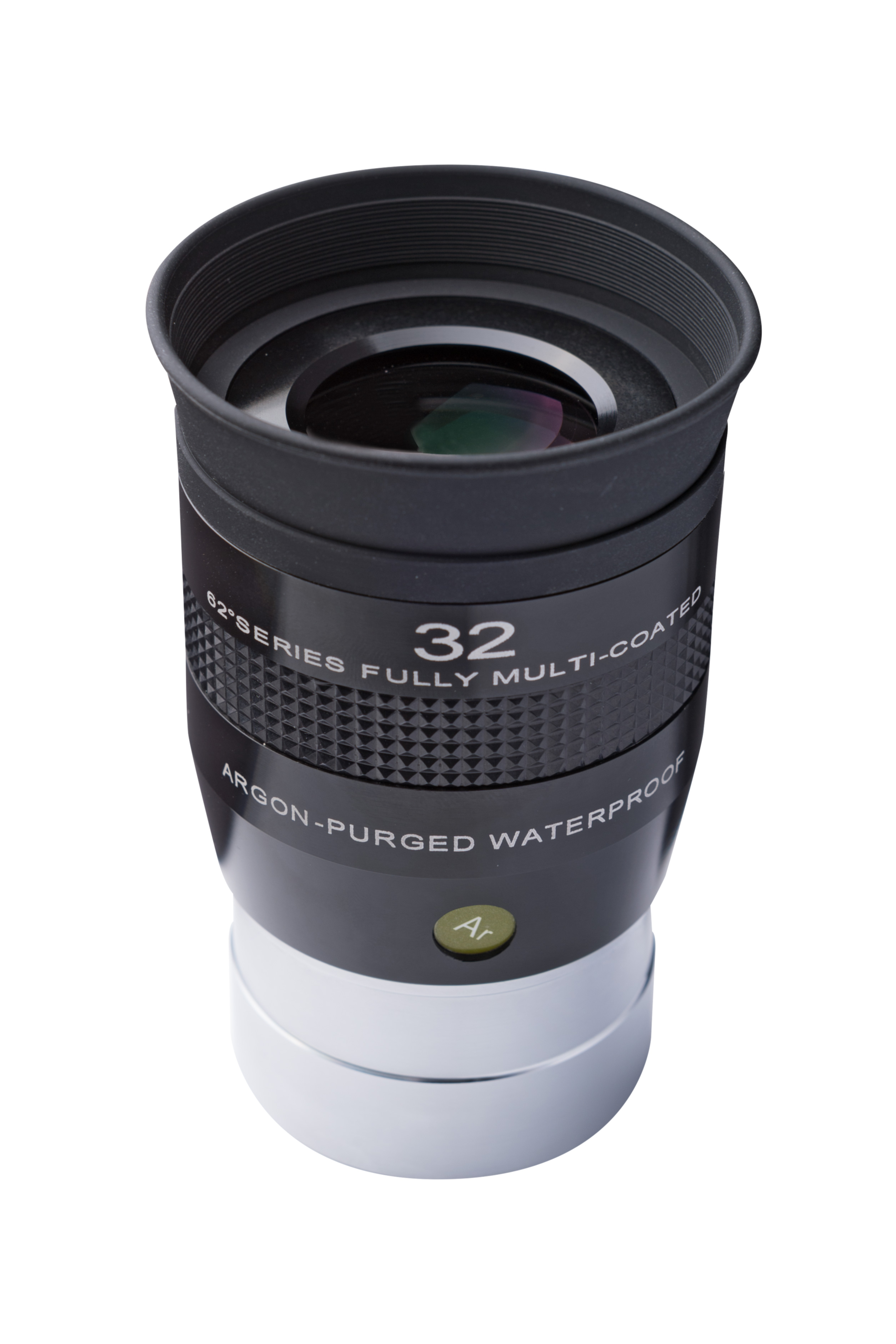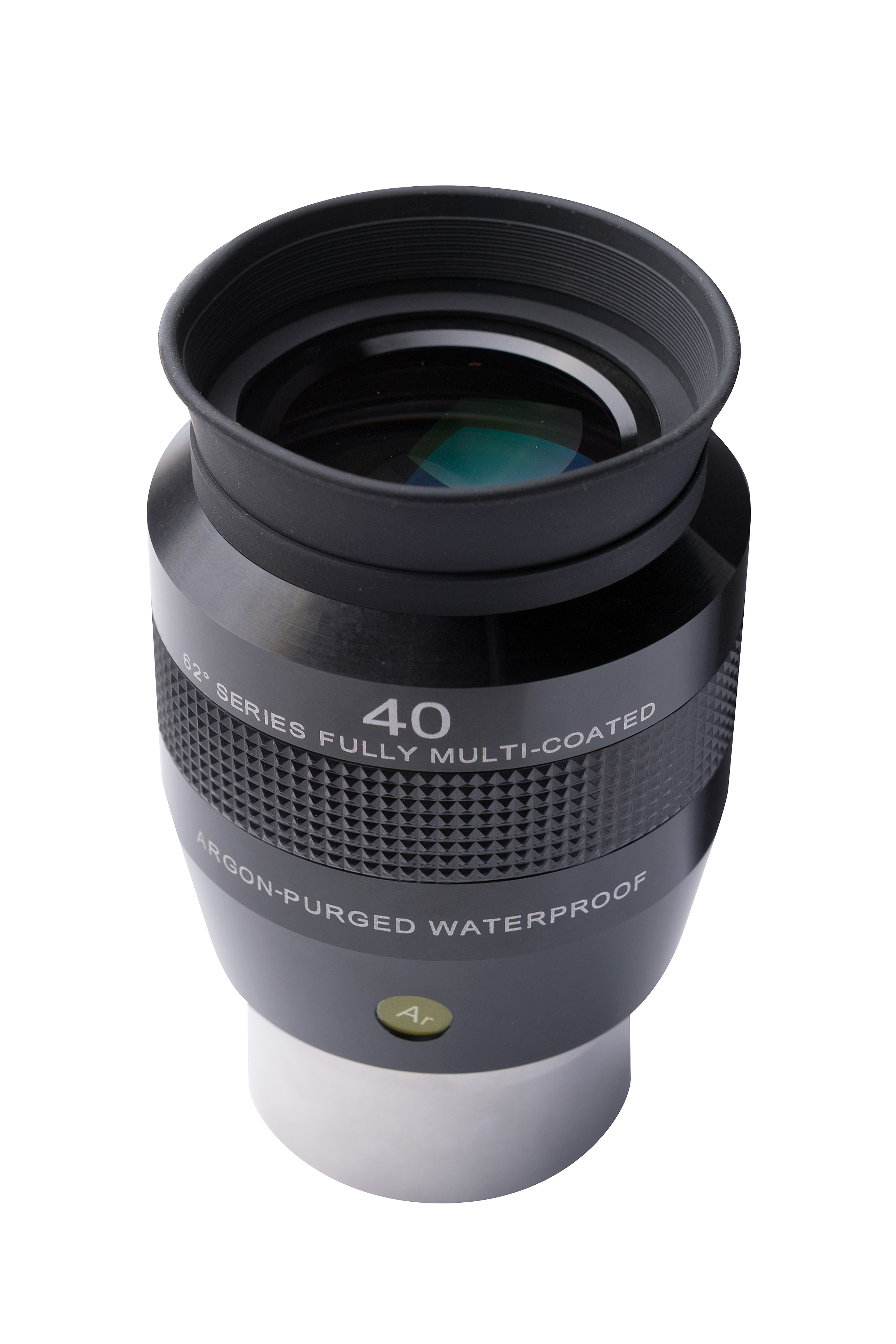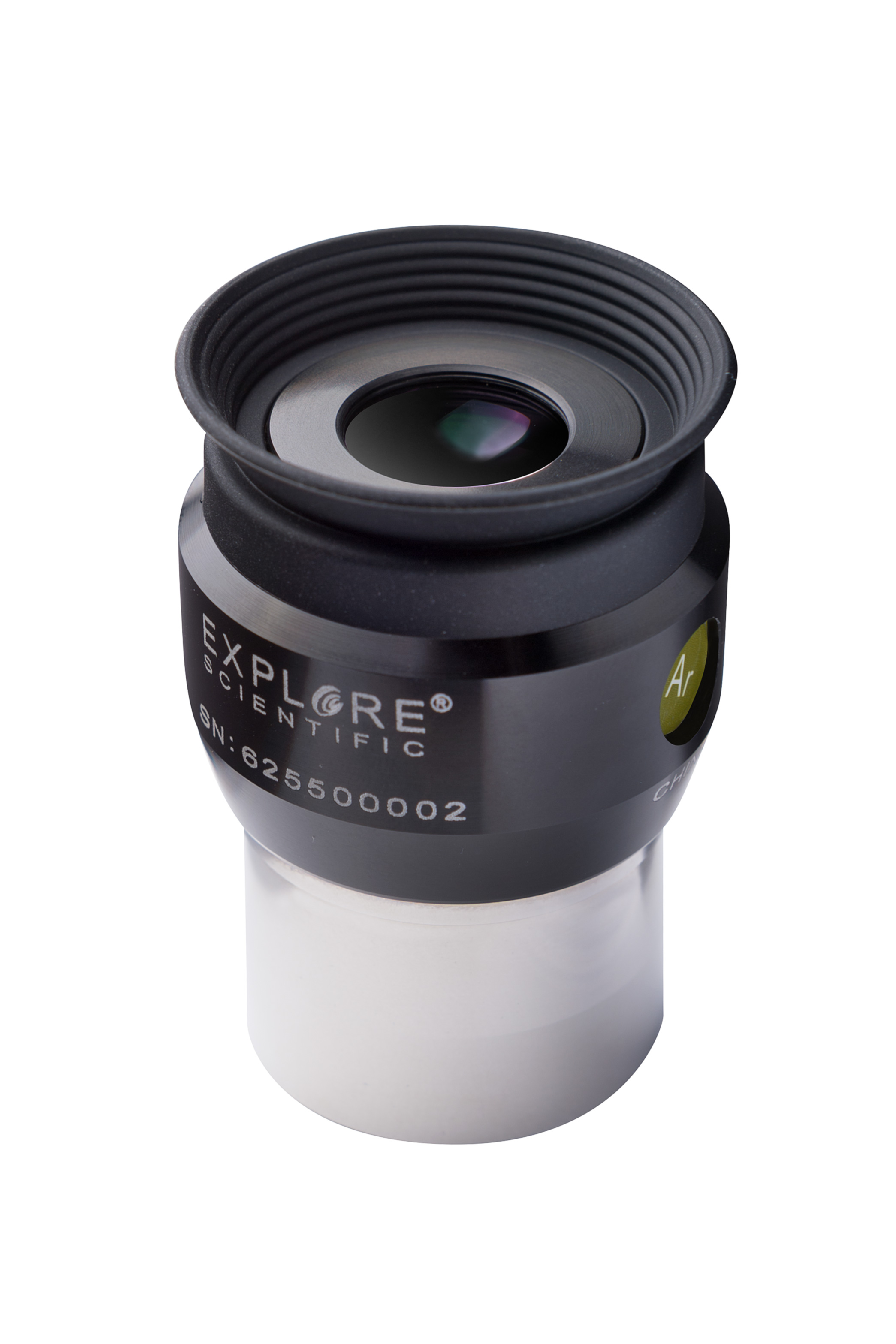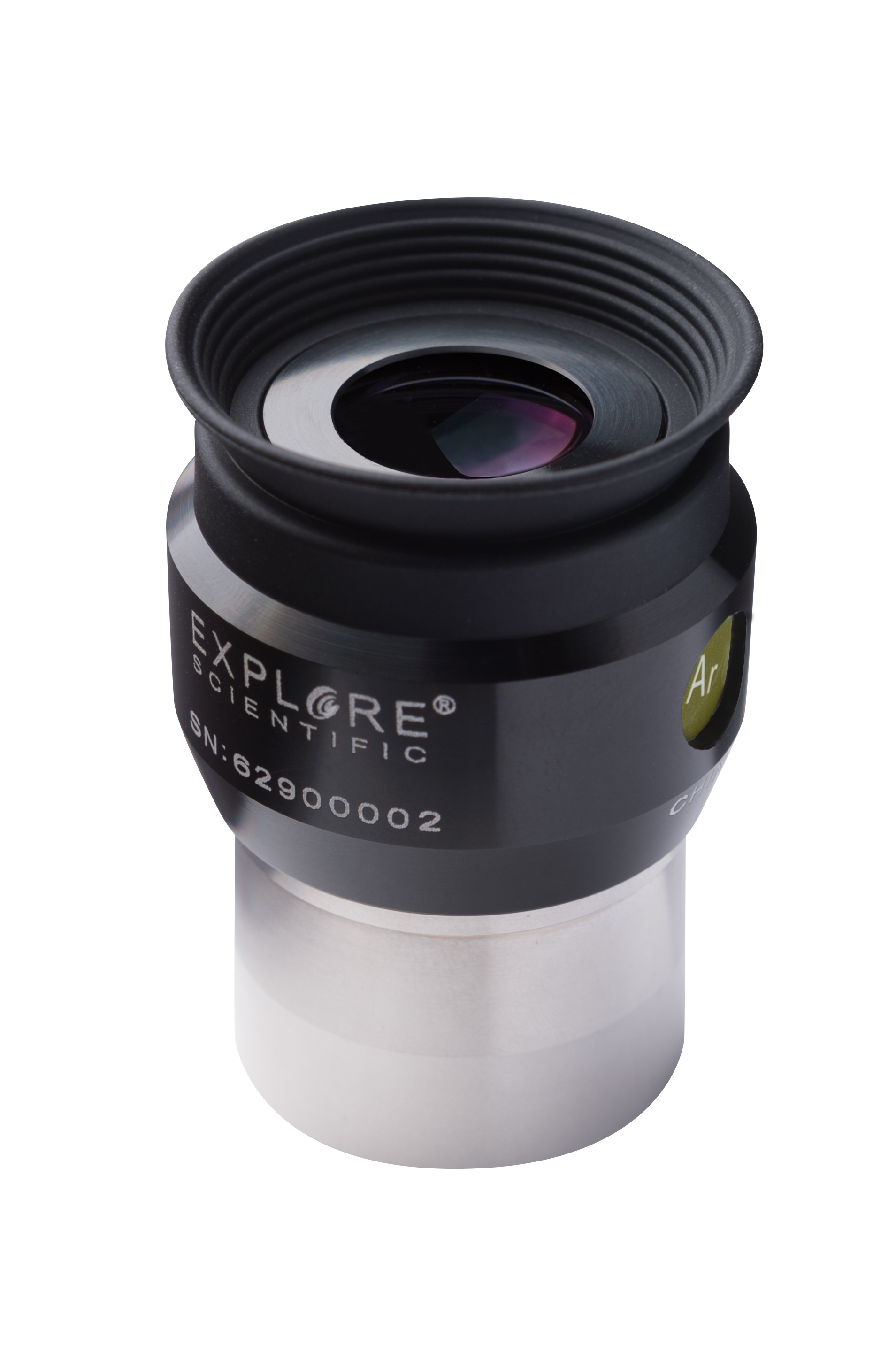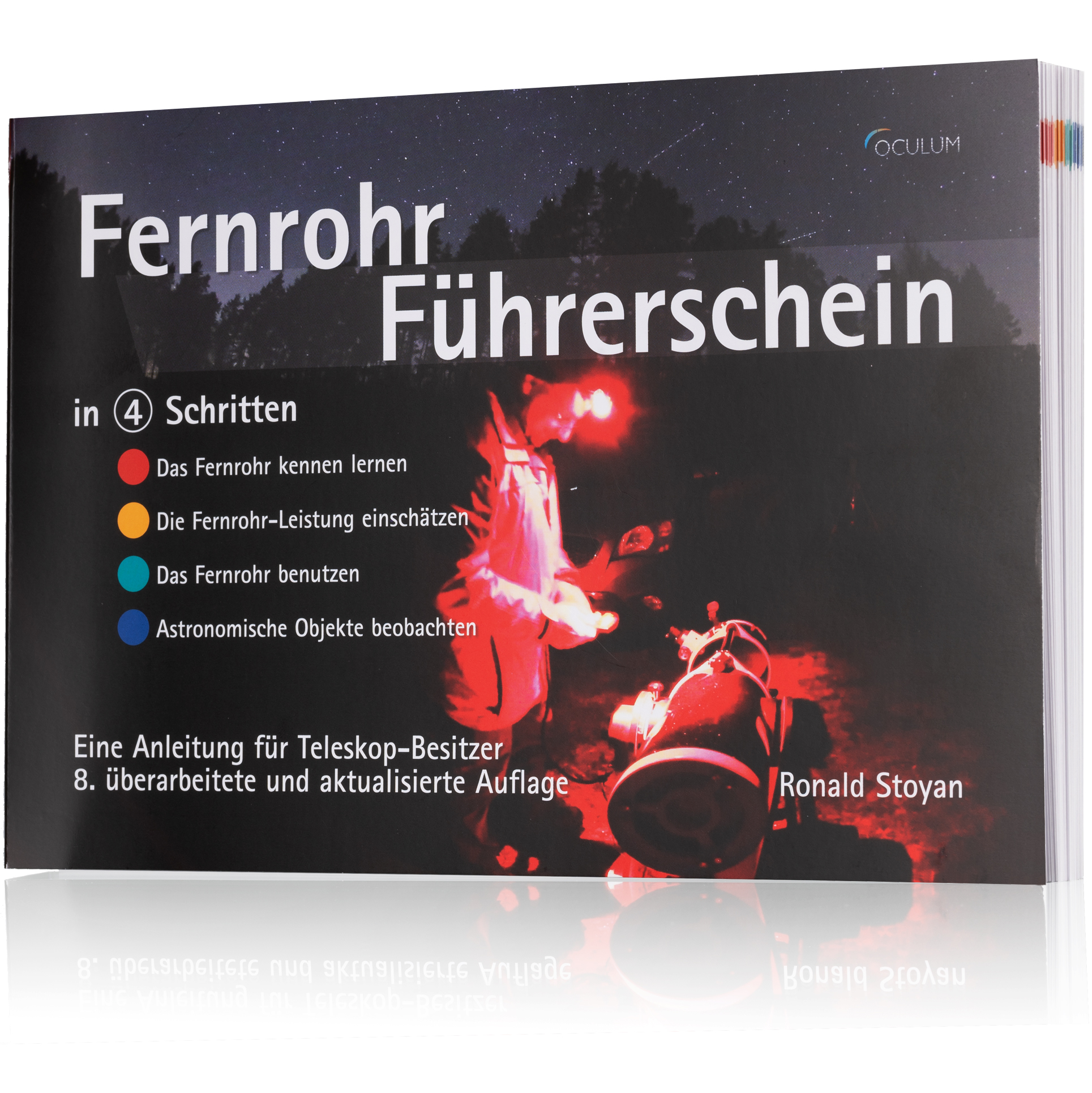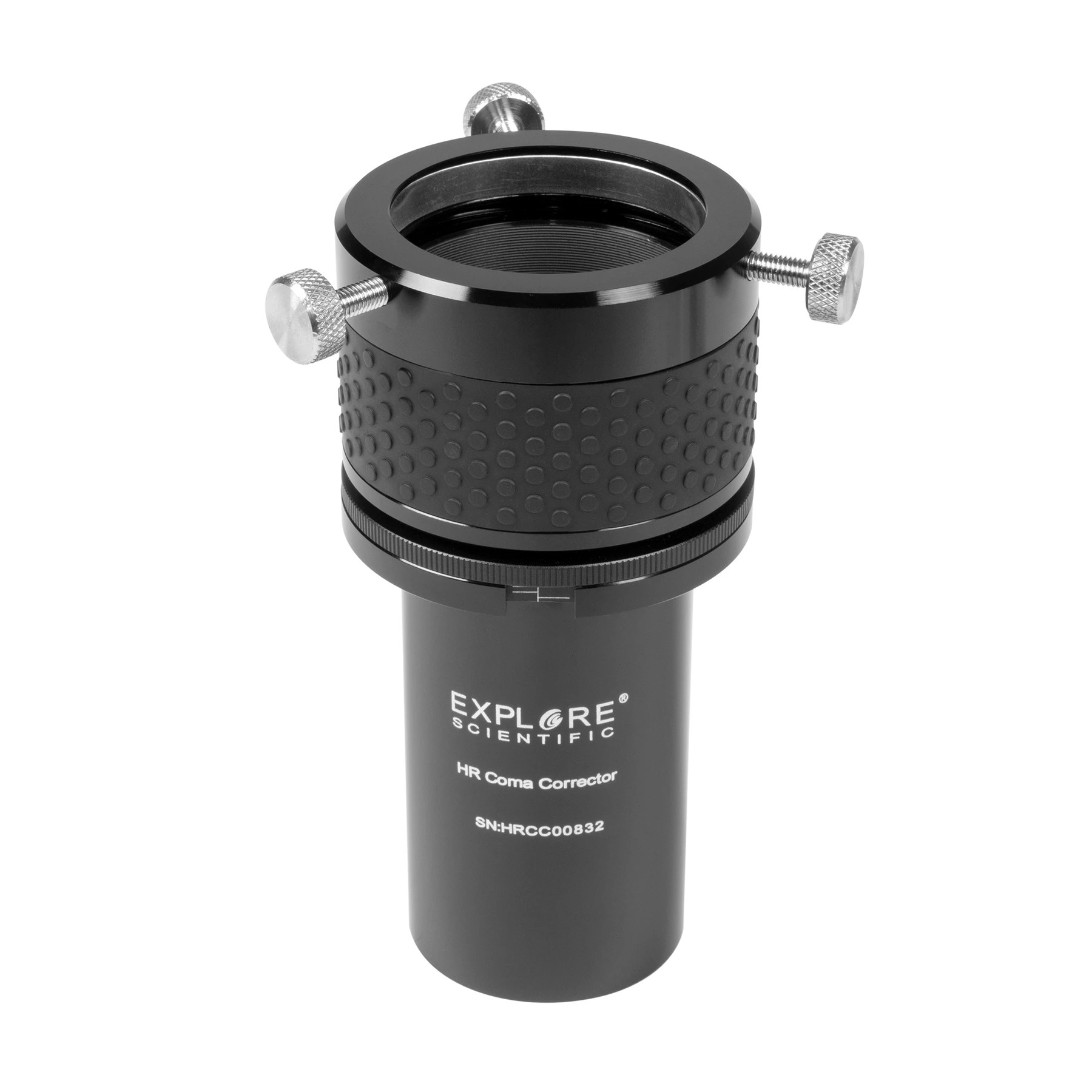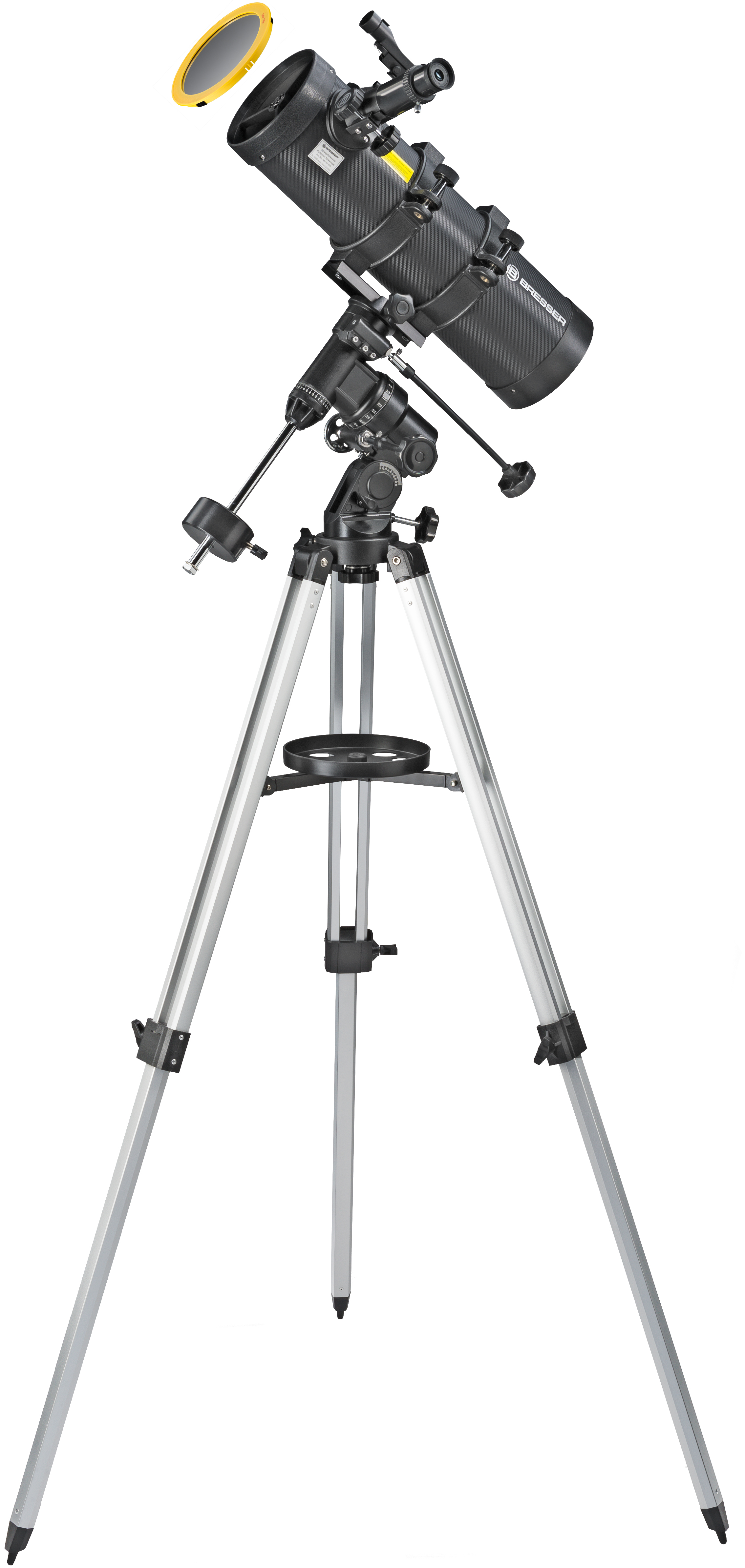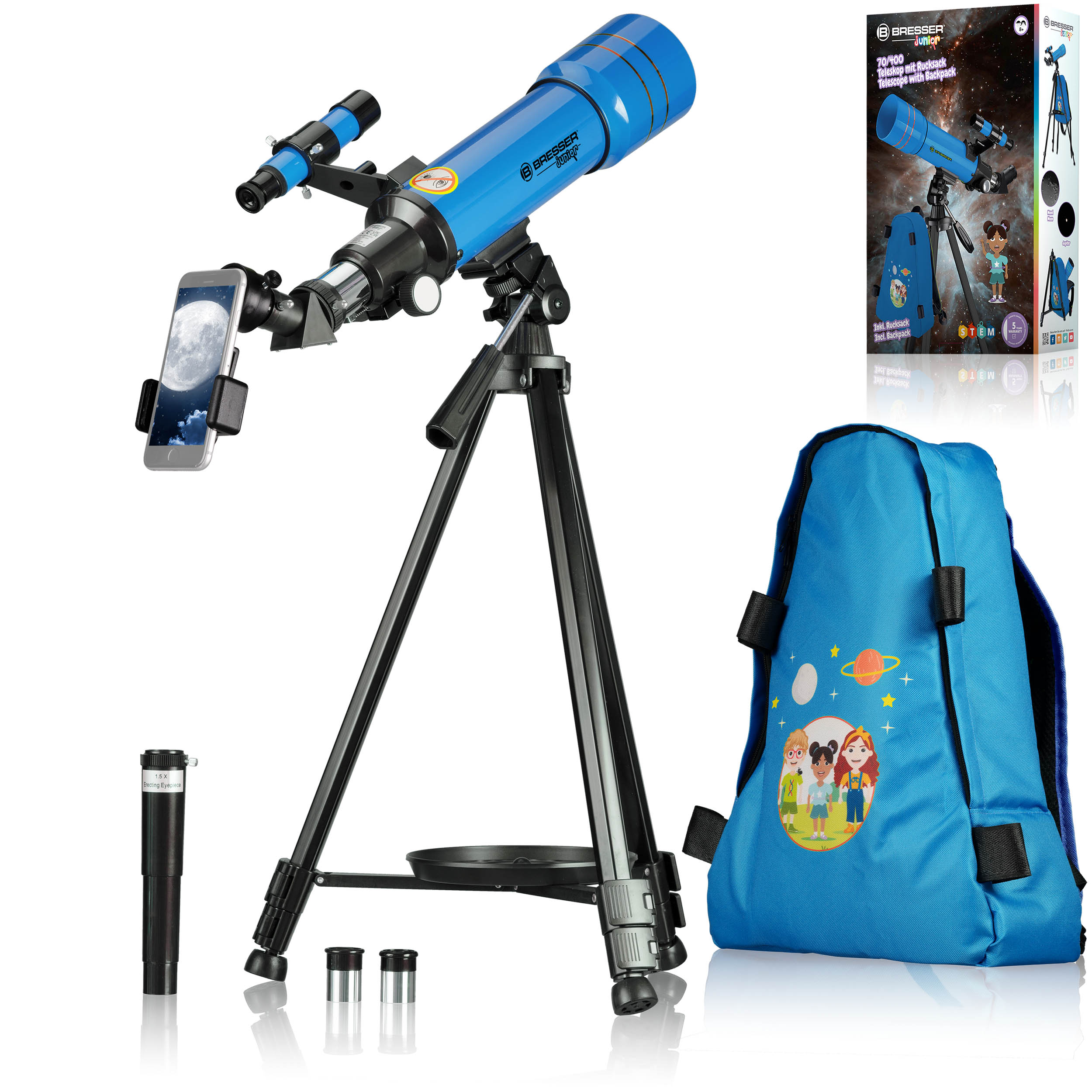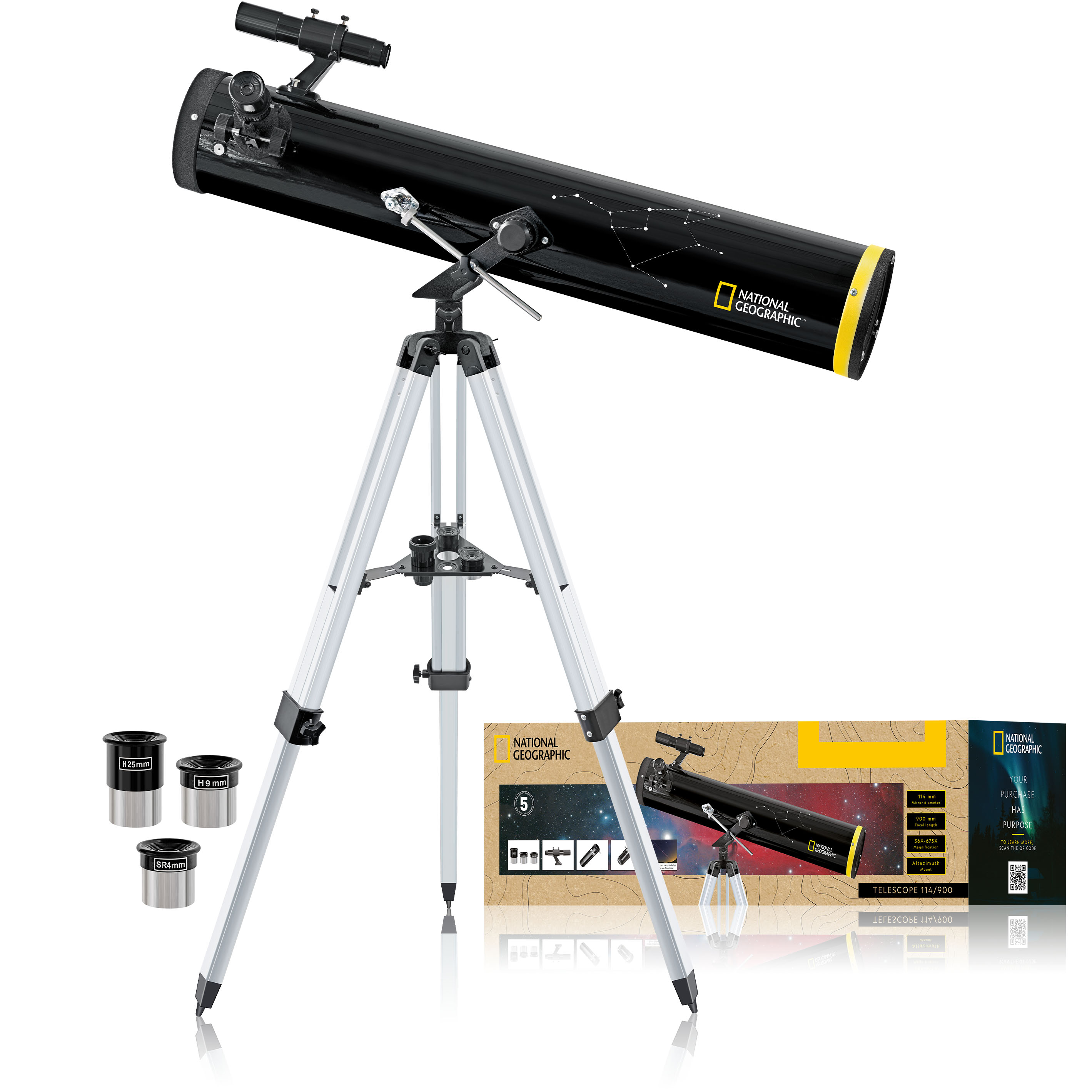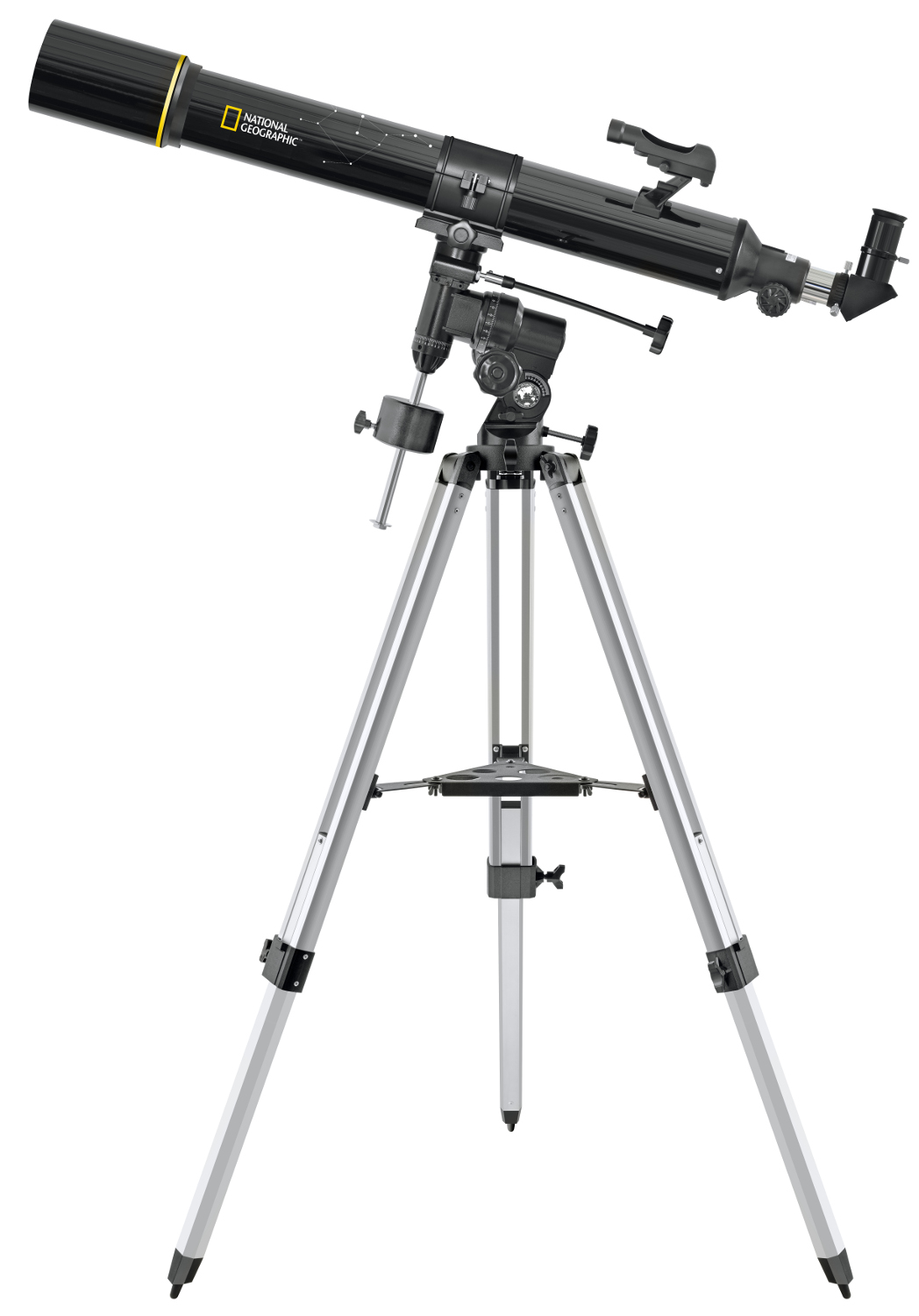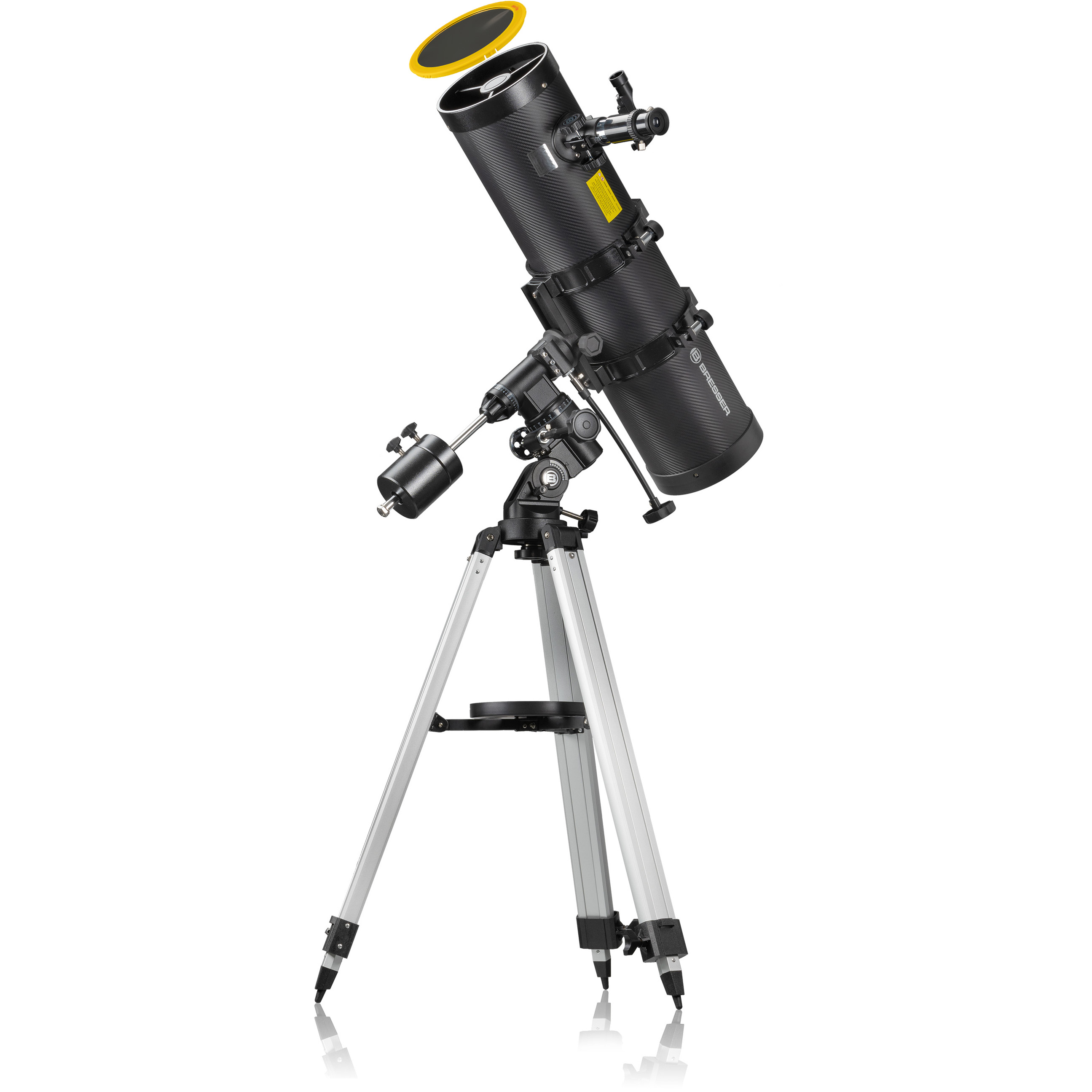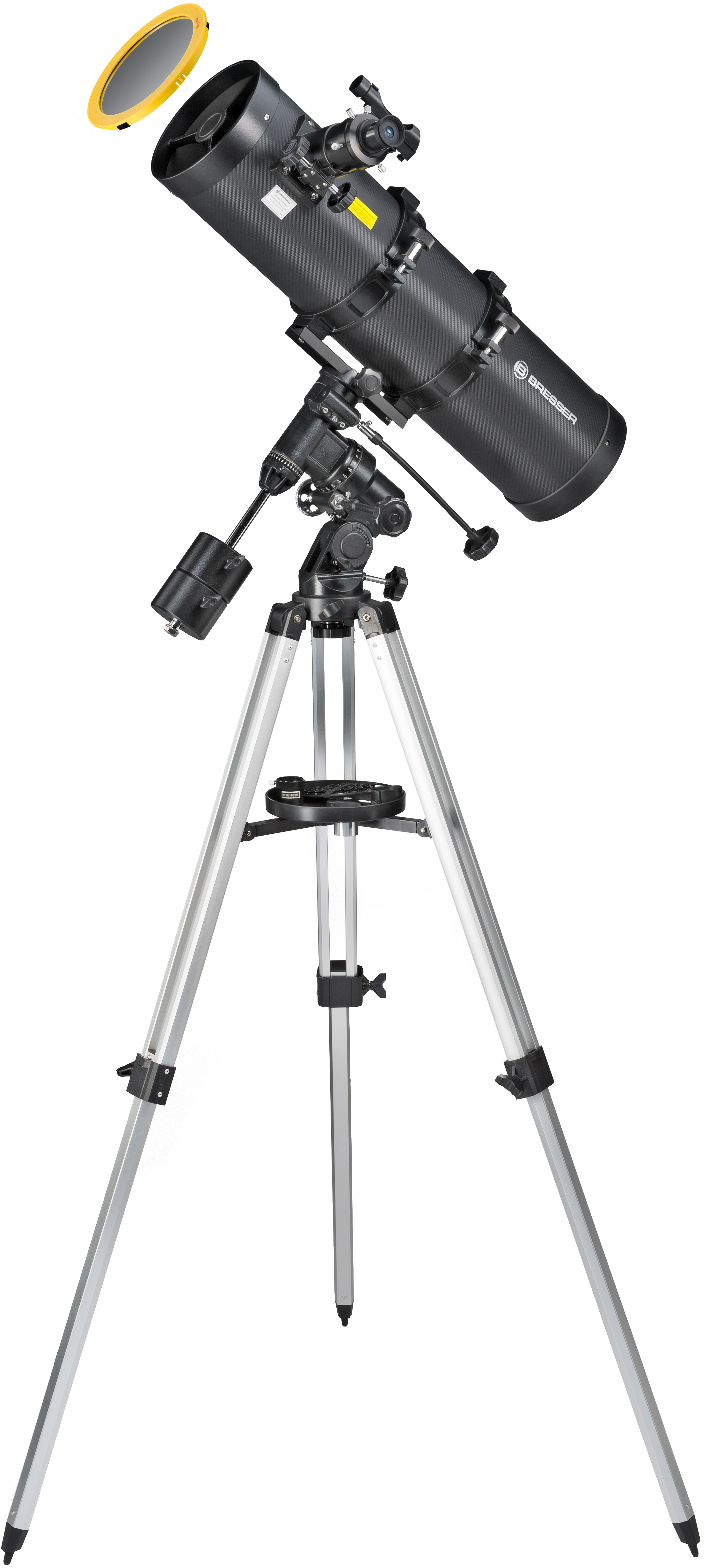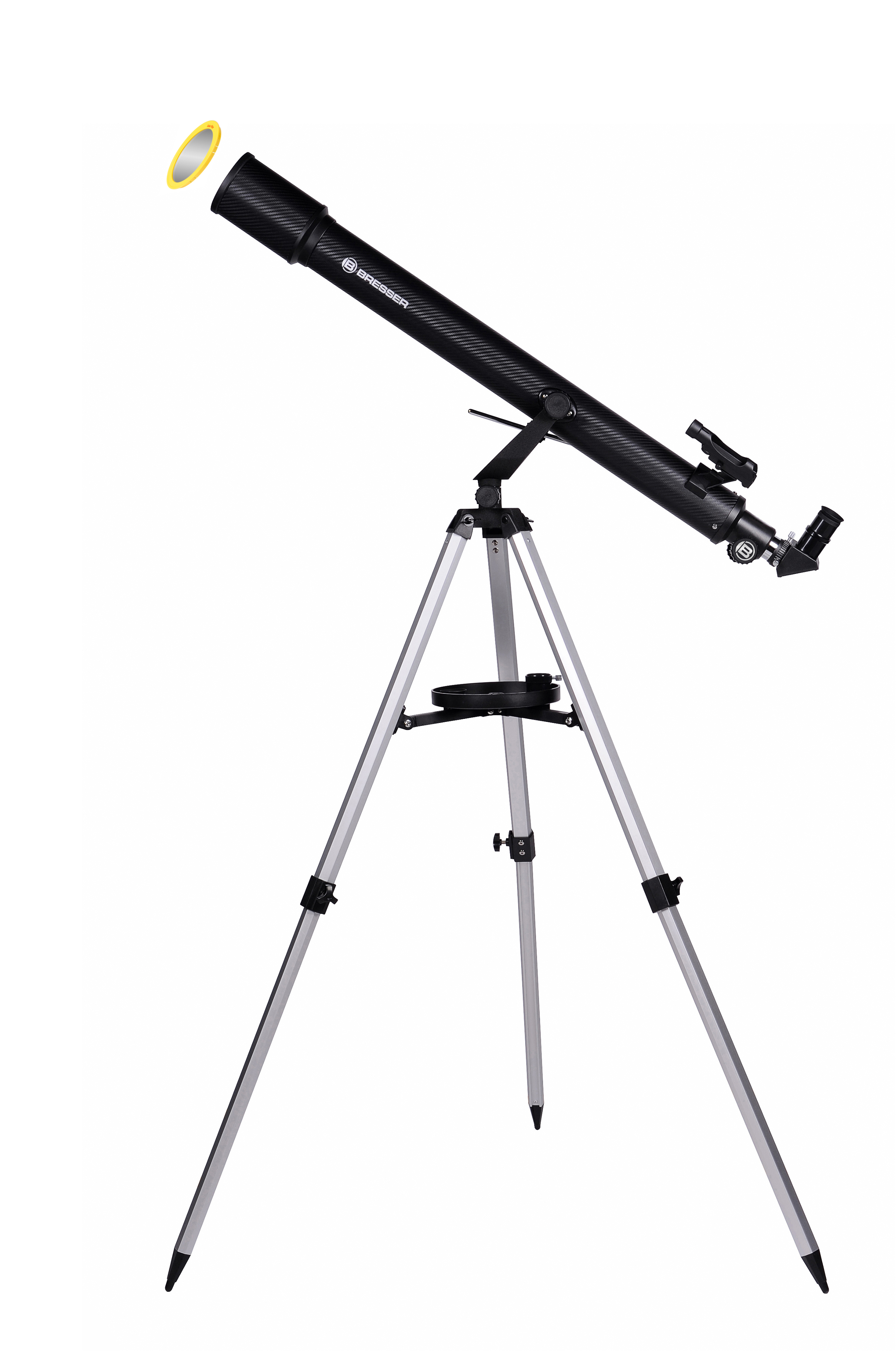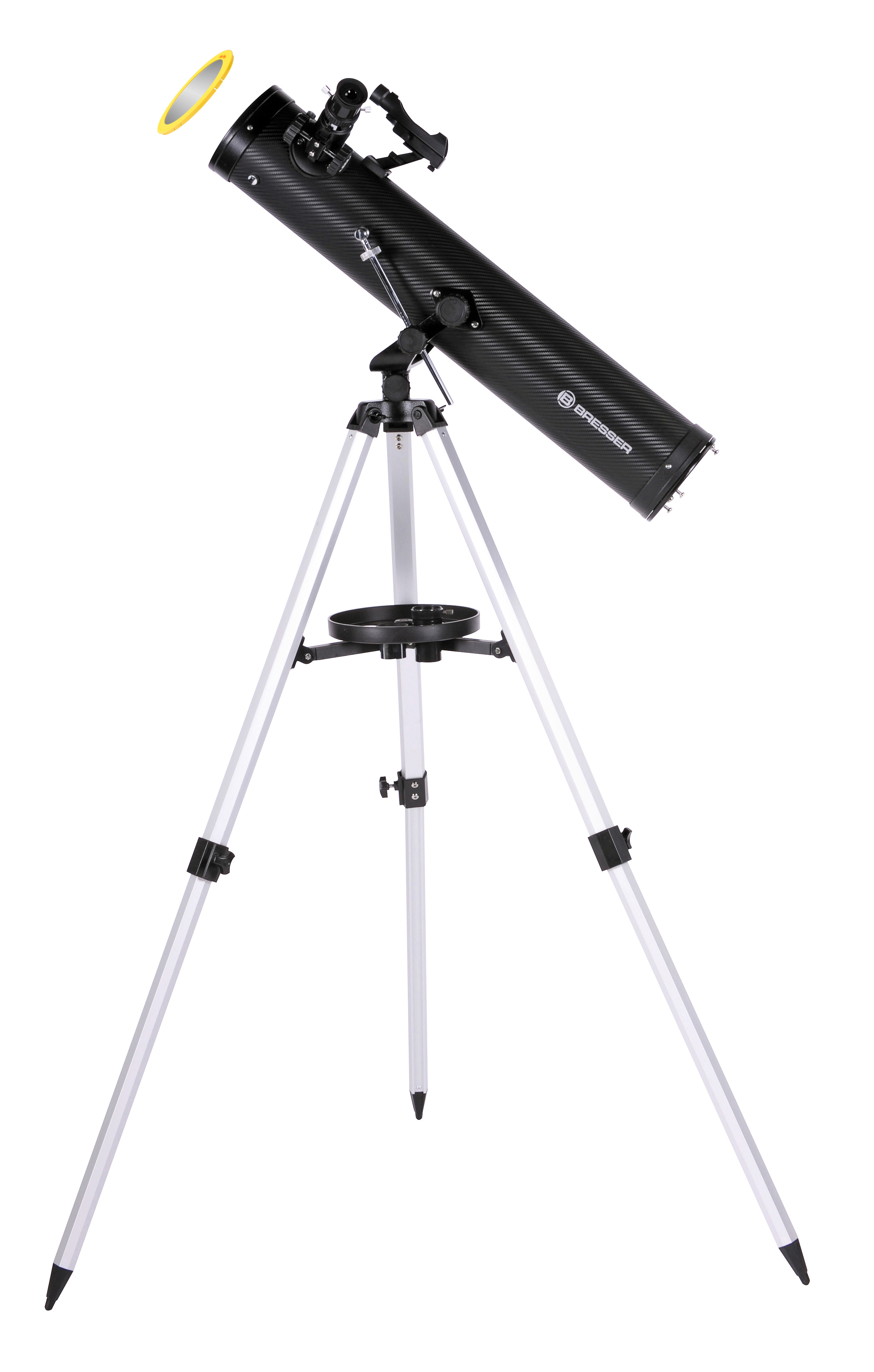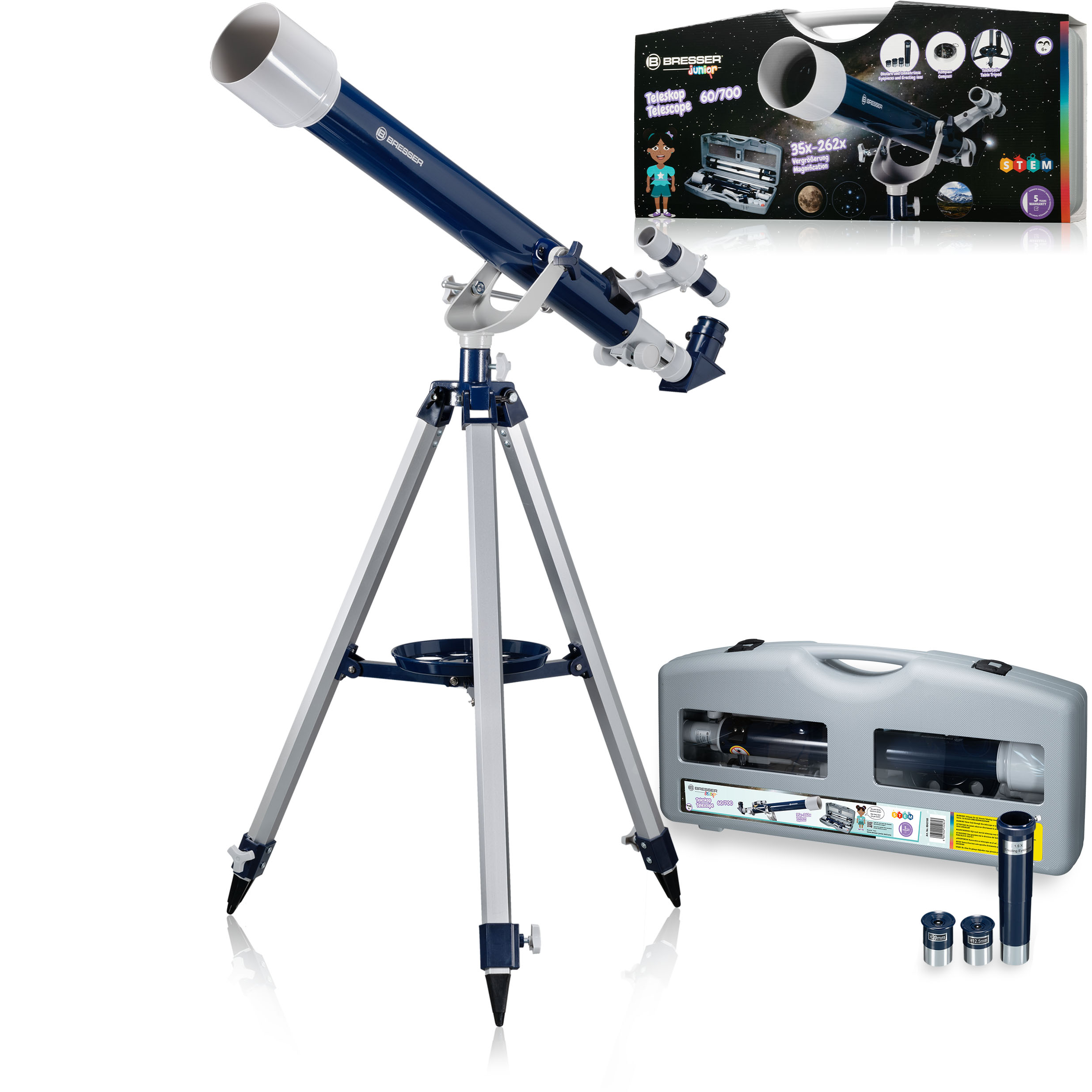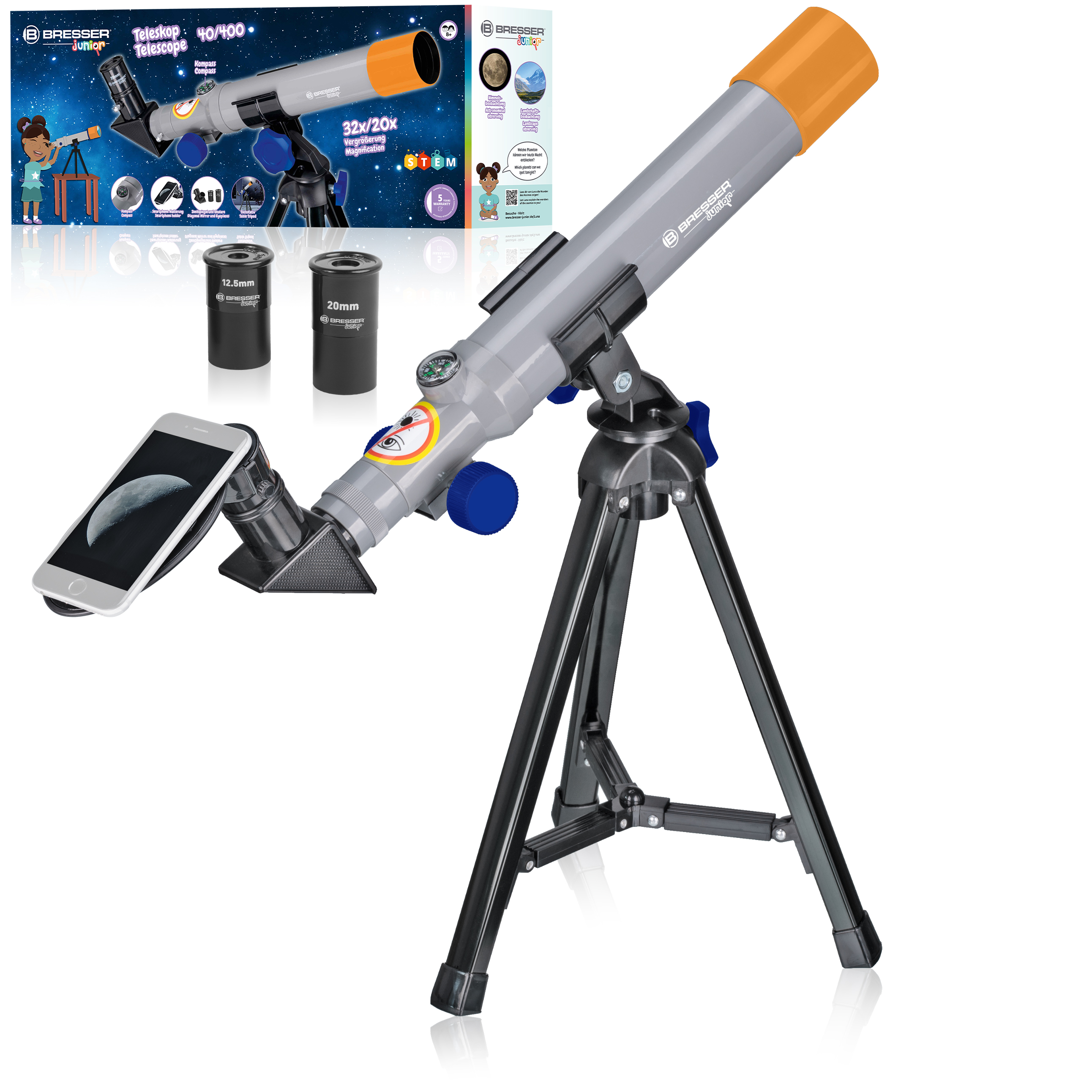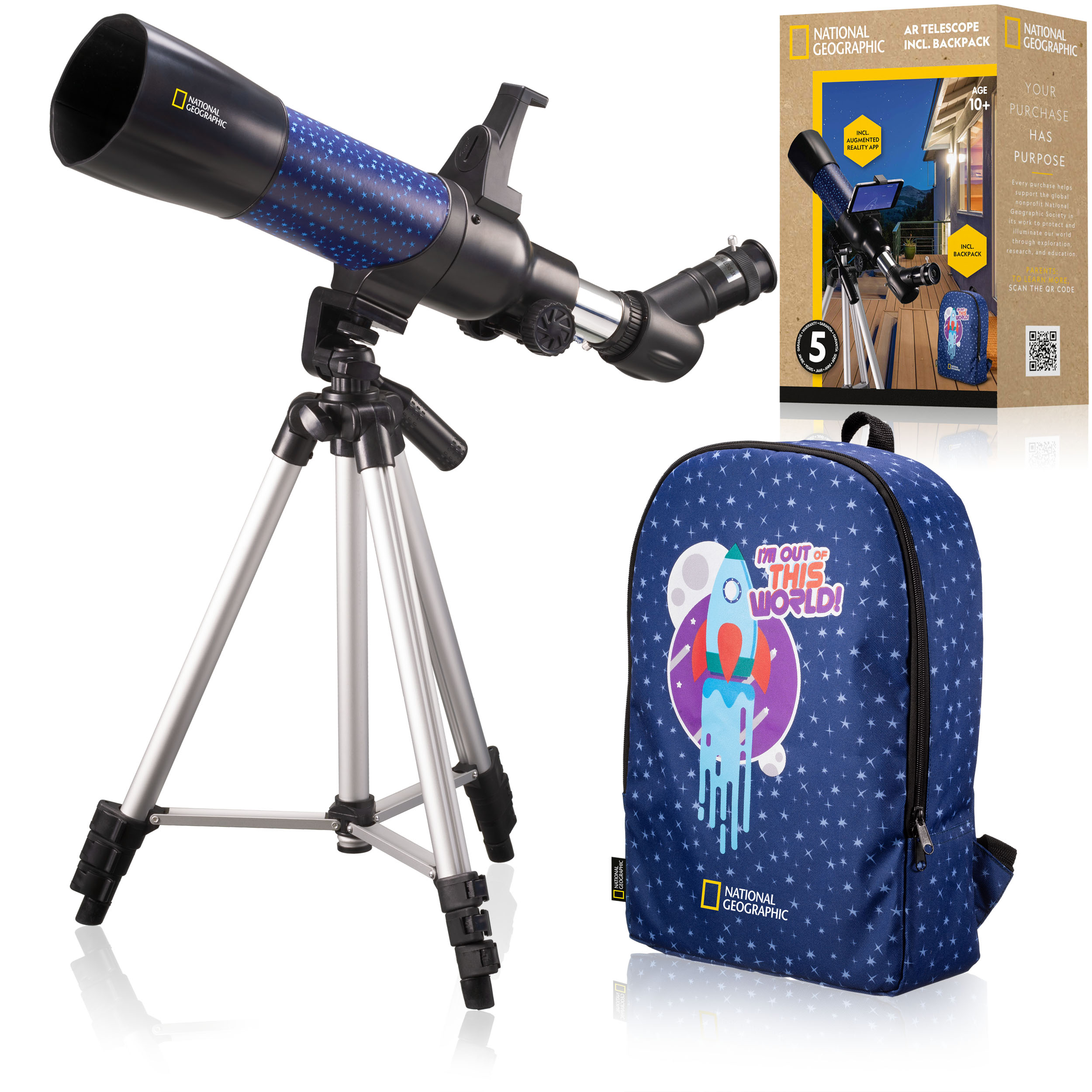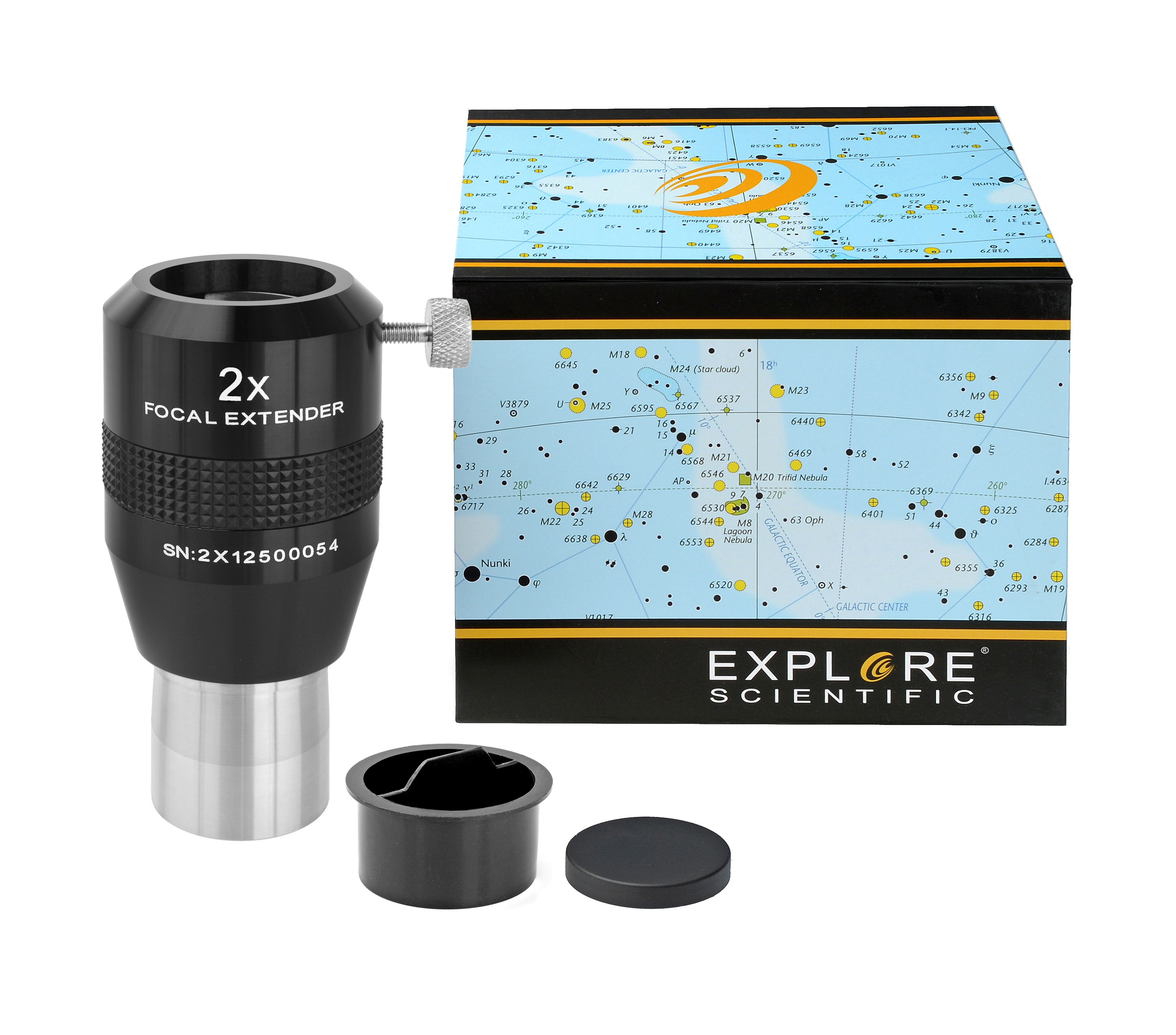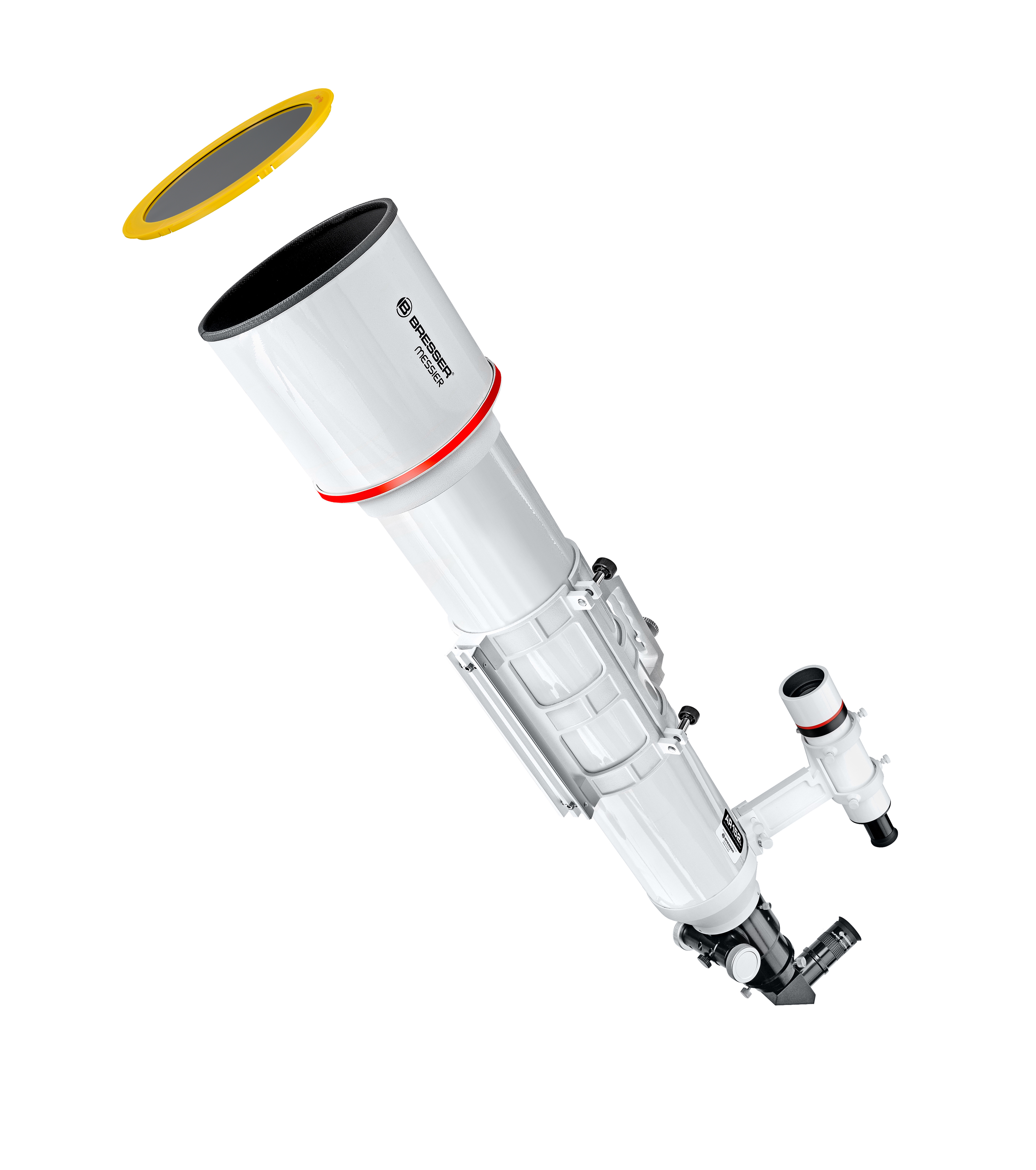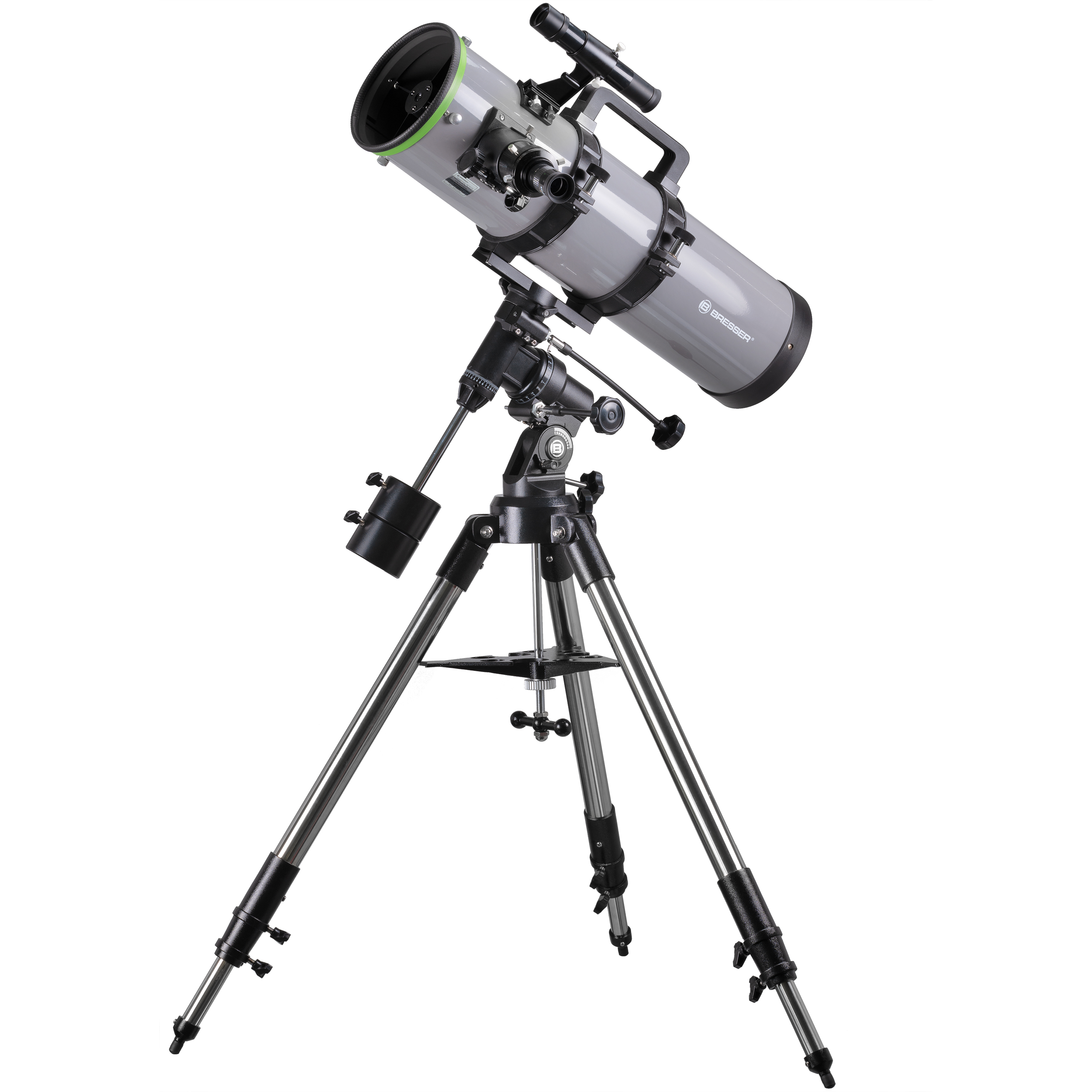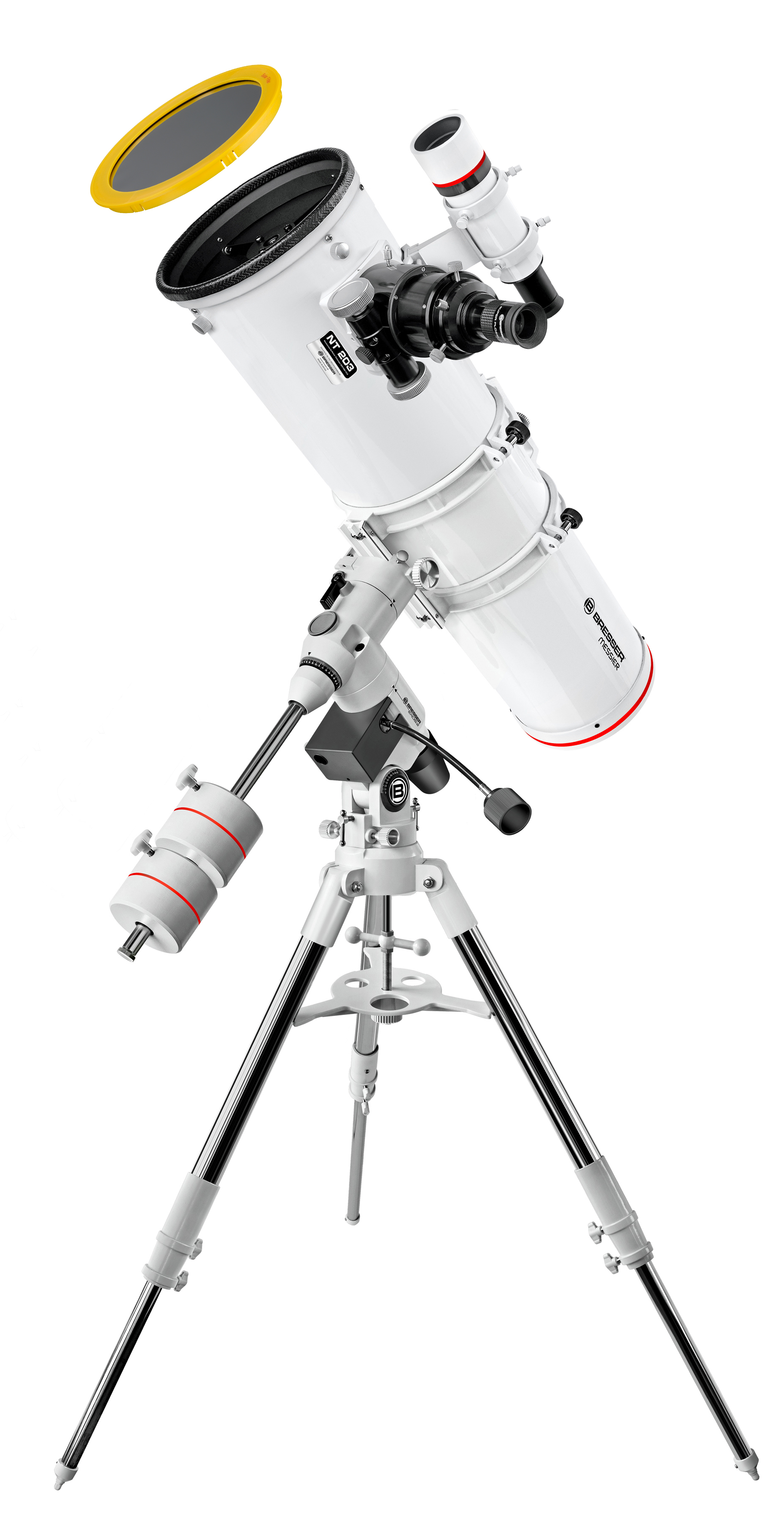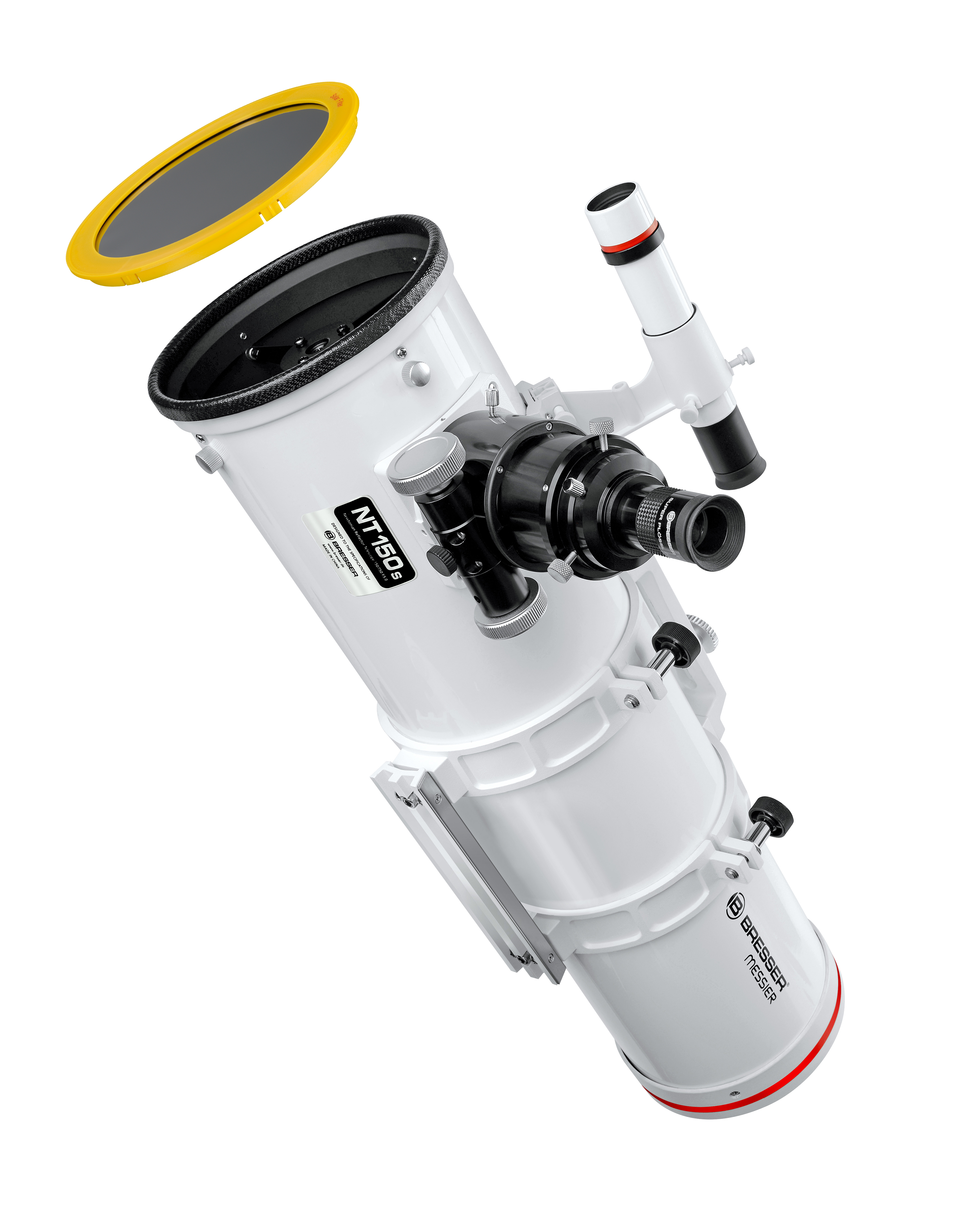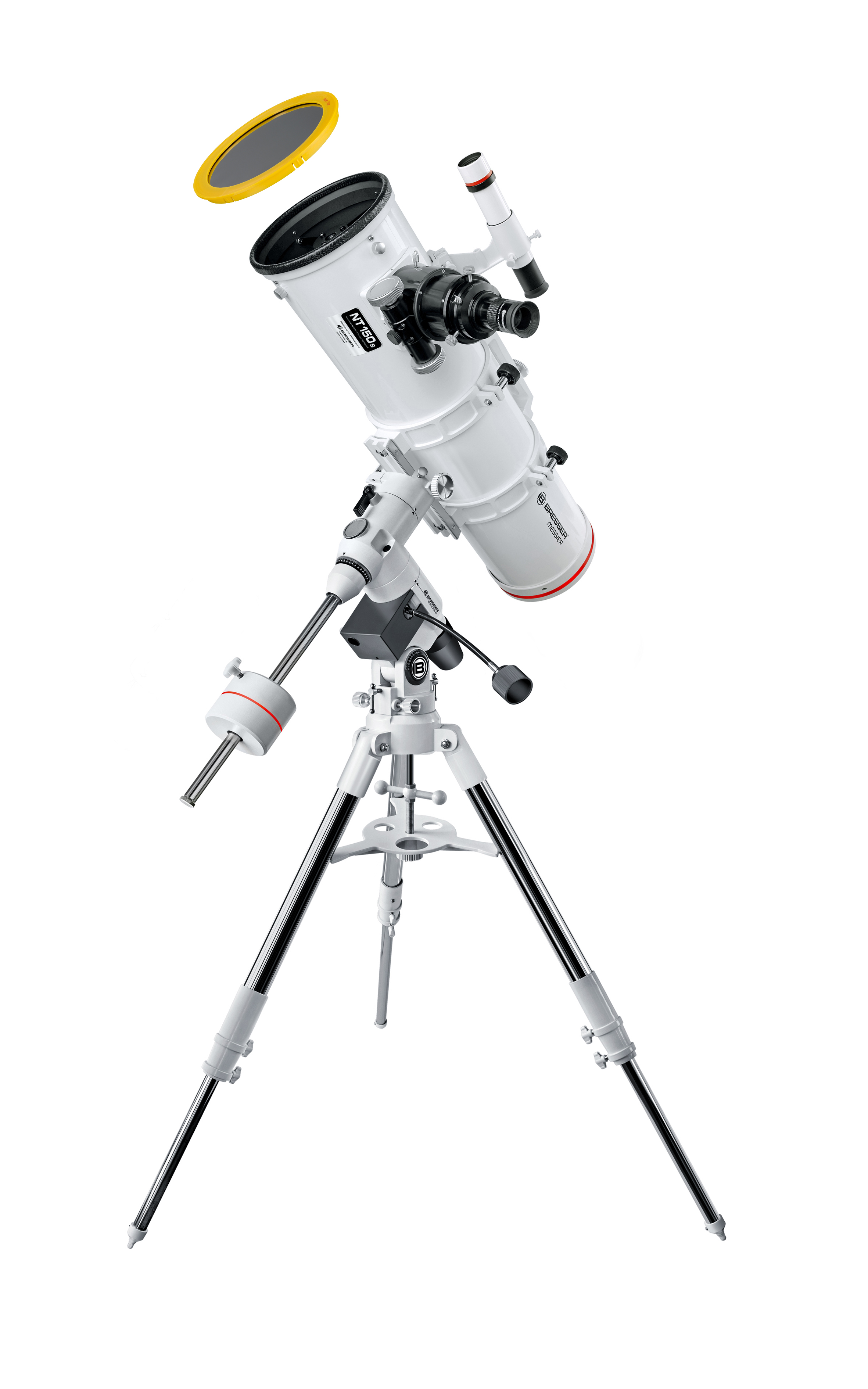
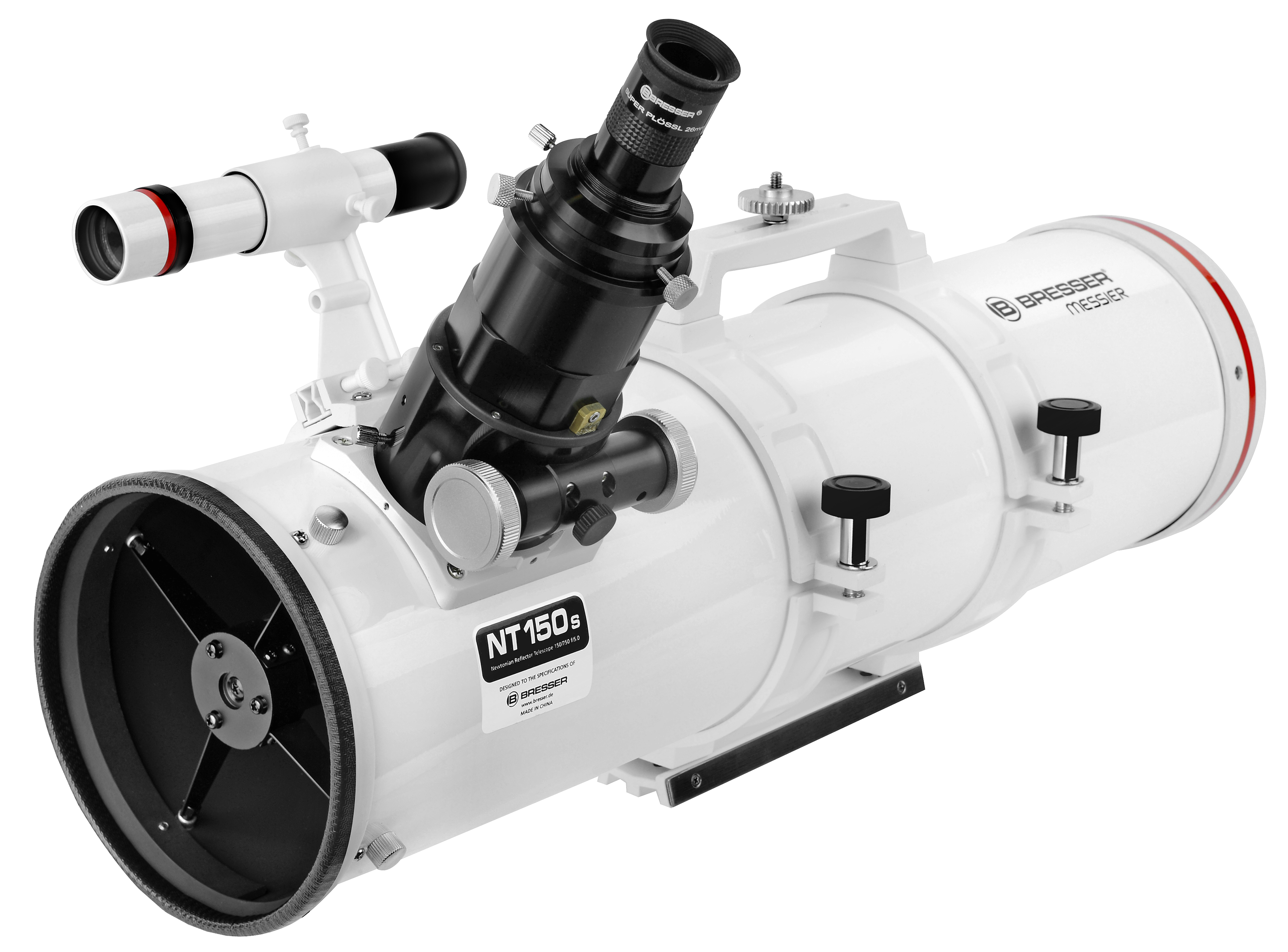
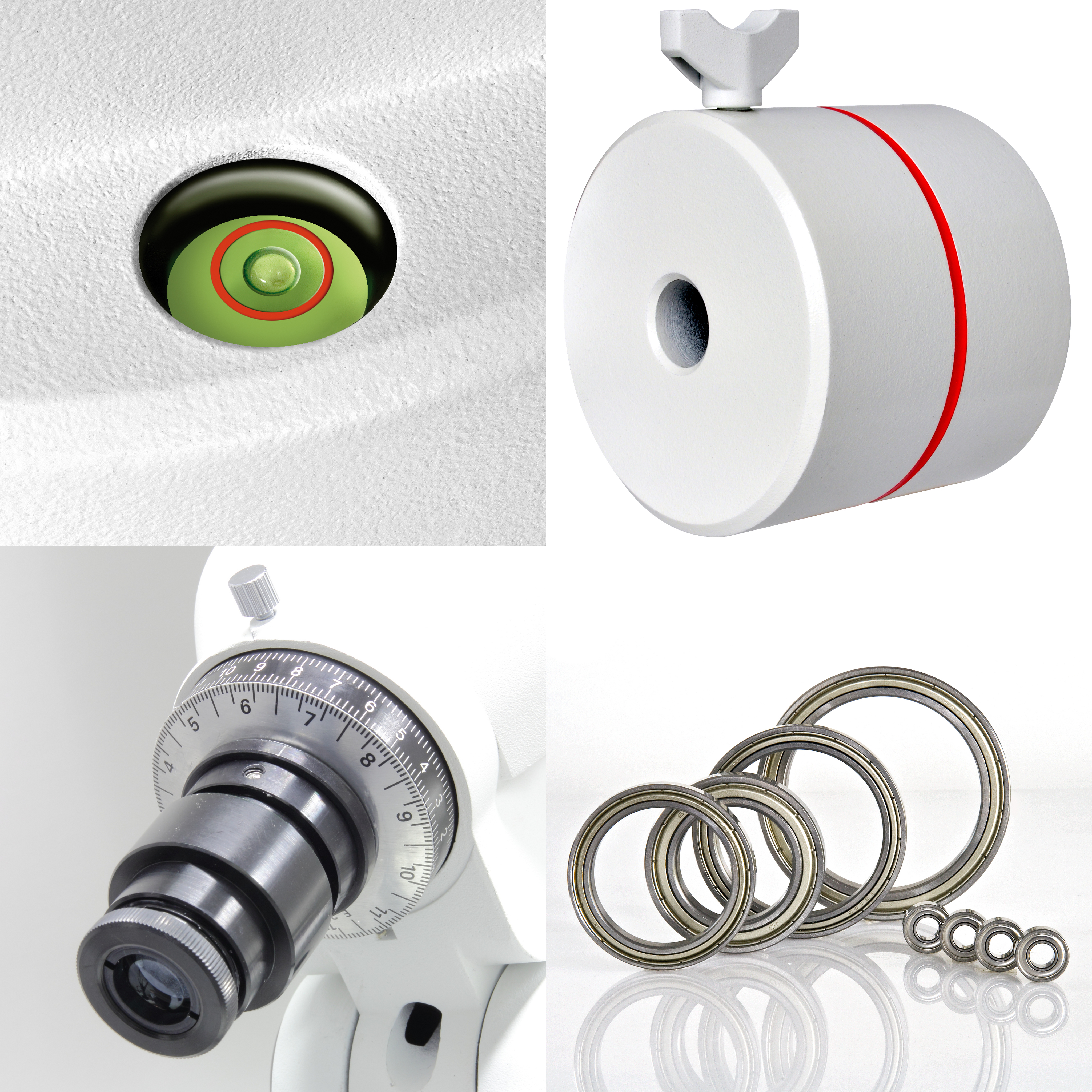
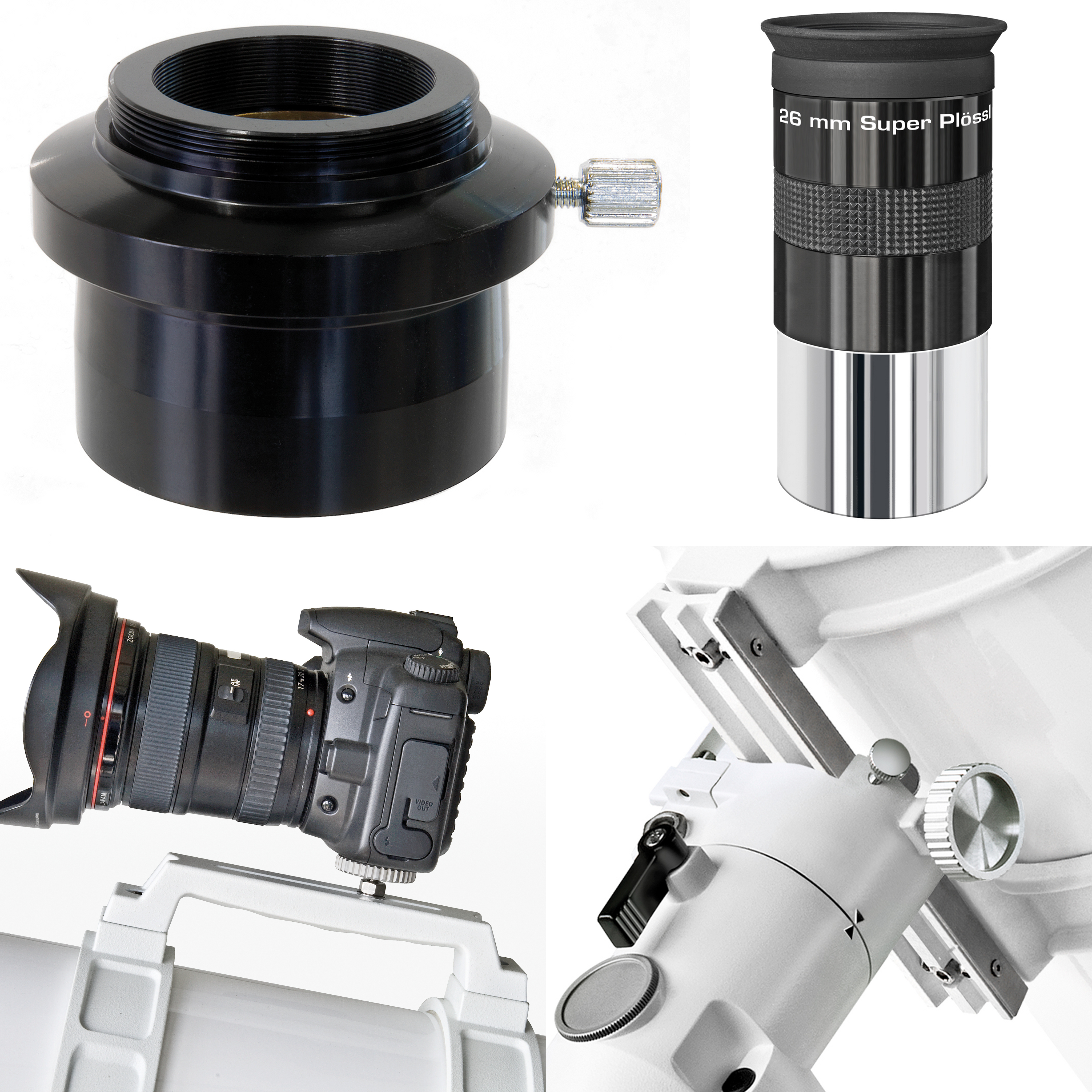
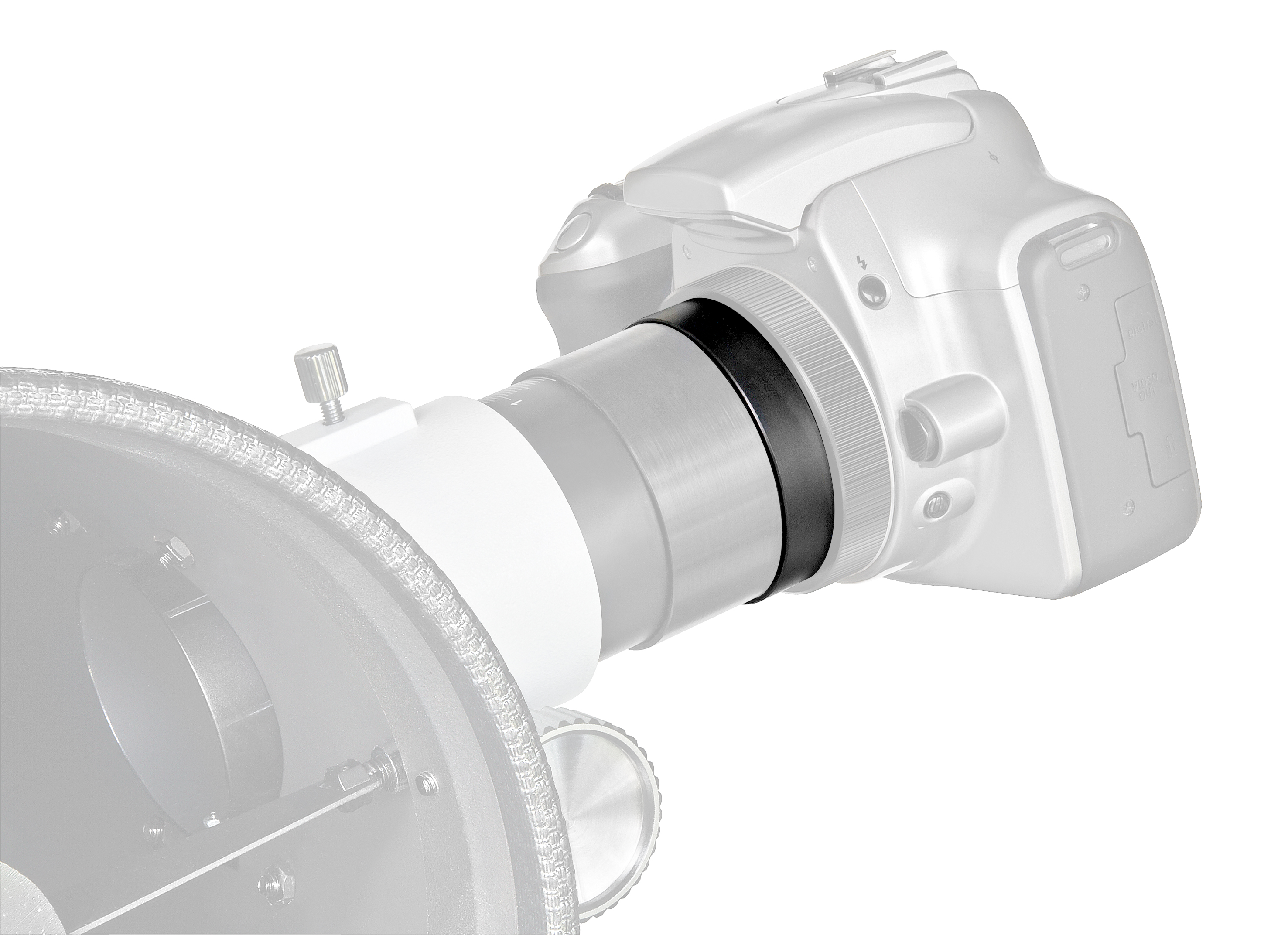
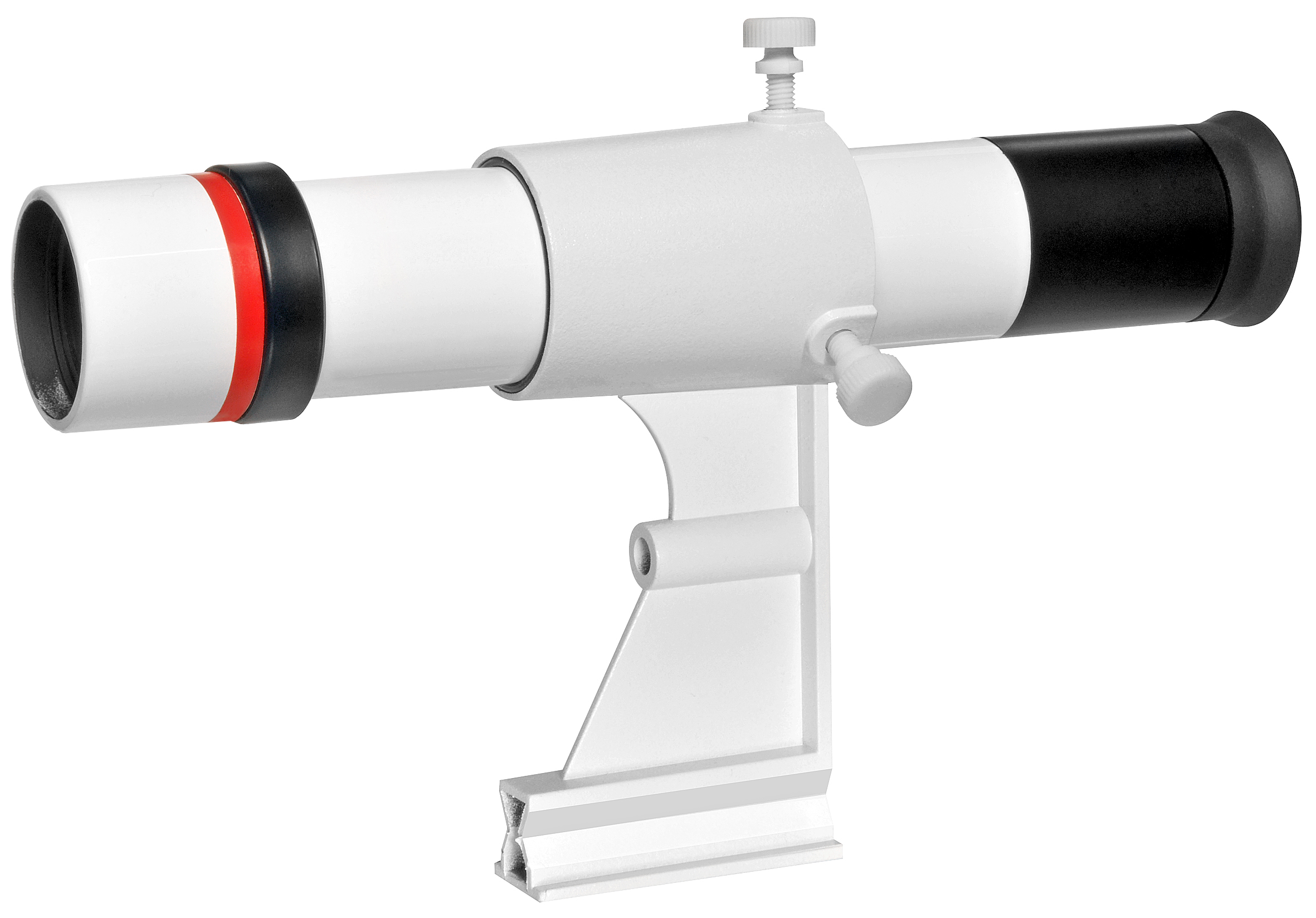


















150 mm f/5 Newtonian telescope with mount and tripod
- 150 mm Newtonian telescope with stable mount
- D: 150 mm; F: 750 mm; F/D: F/5
- Equat. EXOS-2 mount with solid stainless steel tripod and max. load of 13 kg
- GoTo motors + Startracker optional
- Included: Messier NT-150S, EXOS-2, Acc.
- Aperture Solar-filter and smartphone adapter for celestial navigation included
- Two optional motor/drive systems available
- Excellent HEXAFOC focuser with 65mm diameter
- Precision mount with ball bearings in all axis and polar finder scope with optional illumination
- Handle and camera holder included
With BRESSER, you can enjoy a smooth introduction to the vast world of astronomy. Our detailed information ("Telescope Guide") provides valuable tips for beginners— but even experienced astronomers can use the information we provide (e.g., tables for the geographical latitude of all major world cities) as a reference.
Here is the table of contents of the comprehensive BRESSER Telescope Guide:
With BRESSER, you can enjoy a smooth introduction to the vast world of astronomy. Our detailed information ("Telescope Guide") provides valuable tips for beginners—but even experienced astronomers can use the information we provide (e.g., tables for the geographical latitude of all major world cities) as a reference.
Here is the table of contents of the comprehensive BRESSER Telescope Guide:
- 2. The View into the Starry Sky
- 2.1 Observing with the Naked Eye
- 2.1.1 Observing Constellations with the Naked Eye
- 2.2 Observing with Binoculars
- 2.2.1 Observing Planets and Moons with Binoculars
- 2.2.2 Observing Deep Sky Objects with Binoculars
- 2.2.3 Every Beginning is Easy
- 2.3 Observing with a Telescope
- 2.4 The Moon
- 2.4.1 The Moon Phases
- 2.4.2 The Far Side of the Moon
- 2.4.3 The Moon Map
- 2.4.4 Maria (Seas)
- 2.4.5 Mare
- 2.4.6 Craters
- 2.4.7 The Ray Craters
- 2.5 Observing the Solar System with a Telescope
- 2.5.1 Where are the Planets?
- 2.5.2 Planet Observation
- 2.5.3 The Position of the Planets Relative to the Sun
- 2.5.4 The Planets Introduce Themselves
- 2.5.5 Deep Sky Observation with a Telescope
- 2.6 Practical Observation Tips and Tricks
- 2.6.2 Tips for Optimal Observation Conditions
- 2.7 The Most Beautiful Objects Throughout the Year
- 4. Telescopes
- 4.1 The Telescope as an Observation Instrument
- 4.2 Optics
- 4.2.1 Refractor (Lens Telescope)
- 4.2.2 Reflector (Mirror Telescope)
- 4.3 Mechanics
- 4.3.1 Altazimuth Mount
- 4.3.2 Equatorial Mount
- 4.3.3 Drive Motors
- 4.4 Accessories
- 4.4.1 Eyepieces
- 4.4.2 Important Tips for Eyepiece Selection
- 4.4.3 Filters
- 4.4.4 Photographic Accessories
- 4.4.5 Other Accessories
- 5.1 Which Telescope for Whom?
- 5.1.1 Deep-Sky Observations
- 5.1.2 Observing Closer Planets
- 5.1.3 The Topic of Portability
- 5.1.4 Price Factor When Buying a Telescope
- 6. Useful Tables
- 6.1 Table for the Geographic Latitude of All Major World Cities
- 6.1.1 Observers in the Northern Hemisphere (N):
- 6.1.2 Observers in the Southern Hemisphere (S):
- 6.2 Lookup Table for Notable Stars
- 6.3 Getting Acquainted with the Universe - or: Distances in Space
Erfahrungsbericht zum Bresser NT-150S/750
von Marco Hodde
Am 20.2.2018 bot sich bei klarem Himmel die Möglichkeit, den NT-150S/750 einmal optisch und fotografisch genauer unter die Lupe zu nehmen.
.jpg)
Bresser NT-150S/750
Zum Teleskop: Mit einer Öffnung von 150 mm und einer Brennweite von 750 mm ergibt sich ein Öffnungsverhältnis von f/5. Persönlich finde ich dieses Öffnungsverhältnis sehr gut für einen Allrounder. Würde ich bei Deep Sky Beobachtungen eher zu schnelleren Öffnungsverhältnissen neigen (f/4 oder gar f/3), so verzeihen diese einem bei der Justage keinerlei Toleranz, welches sich in der Abbildung bemerkbar macht. Bei Planetenbeobachtungen kommen eher größere Öffnungsverhältnisse in Frage ( f/5 bis zb f/13).Fazit: Mit einer Öffnung von 150mm, einem Gewicht von gerade mal 5,5kg und einem Öffnungsverhältnis von f/5, finde ich das Gerät als Multitalent überall einsetzbar.
Dank des im Lieferumfang enthaltenden Zubehör, habe ich die Möglichkeit sowohl mit 1,25“ als auch mit 2“ Okularen zu beobachten. Nicht nur das, auch fotografisch kann ich ohne Probleme eine handelsübliche Kamera auf den integrierten Kamerahalter (befestigt am Handgriff) aufsatteln.
Optischer Eindruck: Nachdem ich das Teleskop auf meine Montierung gesattelt habe, habe ich den offenen Tubus ca 1 Stunde auskühlen lassen, damit der Hauptspiegel die Umgebungstemperatur erreicht. Dies ist wichtig , damit sich das Teleskop an die vorherrschenden Temperaturen anpassen kann. Nun konnte das Beobachten beginnen. Mit dem im Lieferumfang enthaltenen 26mm Okular erreicht man eine 29fache Vergrösserung (750mm Brennweite/ 26mm Okular = 29). Der erste Blick, wie sollte es anders sein, richtete sich in der Winterzeit auf den Orionnebel. Diesen bekommt man schön in seiner ganzen Größe ins Gesichtfeld. Man kann auch die Trapezsterne erkennen. Nun ein Schwenk zum Sternhaufen NGC 2158 und M 35. Die Sternabbildungen sind sehr schön und es macht Spaß die Fülle der Sterne auf sich wirken zu lassen.
Fazit: Die Meinung, man müsse so hoch vergrössern wie nur irgend möglich, ist es ein riesen Irrglaube!!!! Es macht wesentlich mehr Spaß bei kleinerer Vergrößerung ein schön kontrastreiches Bild zu erleben, als sich bei höchstmöglicher Vergrößerung mit kleinem Gesichtsfeld und unscharfer Abbildung zu plagen. Mein Eindruck war auf jeden Fall sehr positiv
Fotografischer Eindruck: Zum fotografischen Teil meines Erfahrungsberichtes. Da ich optisch beim Sternhaufen NGC 2158 und M 35 angelangt war, so nahm ich diese auch als Ziel, fotografisch festzuhalten. Zu den Daten: Die Fotos entstanden mit meiner Canon EOS 760d und die Belichtungszeiten waren bei ISO 400 je 2,5 Minuten. Wer seine DSLR direkt an das Teleskop adaptieren möchte, der benötigt lediglich einen Adapterring von T2 auf das passende Kamerabajonett. Der beim Teleskop enthaltene Okularauszug beeinhaltet nicht nur eine 2“ Steckhülse sondern auch ein T2 Aussengewinde an der 1,25“ Steckhülse.
Nun kommt ein wichtiger Aspekt der jedem klar sein muss, der das Teleskop fotografisch nutzen möchte. Grundsätzlich ALLE Newton Spiegelteleskope verursachen einen Koma genannten Fehler. Dies bedeutet, dass Sterne am Rande des Bildfeldes länglich verzogen werden. Je kürzer das Öffnungsverhältnis ist, desto stärker tritt dieser Effekt auf. Aus diesem Grund empfehle ich einen Komakorrektor. Ich habe bei meinen Aufnahmen einen Komakorrektor von Explore Scientific benutzt: EXPLORE SCIENTIFIC HR Coma Corrector
Zum Vergleich habe ich eine Einzelbelichtung mit und eine ohne Korrektor in mein fotografisches Ergebnis eingefügt
Fazit: Ein sehr lichtstarkes Teleskop, welches mit seiner Brennweite ideal ist um Nebelgebiete wie zum Beispiel den Orionnebel fotografisch festzuhalten. Bedingt durch den auftretenden Komaeffekt ist ein Komakorrektor zwingend erforderlich. Beim Einsatz des Explore Scientific Korrektors wird zusätzlich noch die Verlängerungshülse benötigt, welche beim Teleskop dabei ist, um in den Fokus zu kommen. Sollten Sie ohne Korrektor fotografieren, so schrauben Sie die Verlängerungshülse vom Okularauszug ab um in den richtigen Fokus zu kommen
.jpg)
NGC 2158 und M 35. 30 Aufnahmen bei ISO 400 und je 2,5 Minuten Belichtungszeit
Bilder in voller Auflösung
NGC 2158 und M 35 in voller Auflösung: hier klicken
Mit Korrektor: hier klicken
Ohne Korrektor: hier klicken
Dann, zwei Tage später am 22.2.2018 zeigte sich wieder ein sternklarer Himmel. Also baute ich das Teleskop wieder auf. Diesmal allerdings wollte ich einen Nebel fotografieren. Ich entschied mich für M 97 Eulen-Nebel und die Galaxie M 108. Beide sollten sehr gut ins Bild passen. Der Unterschied zum Sternhaufen lag allerdings fotografisch im Detail. Da ich im tiefsten lichtverschmutzten Ruhrgebiet wohne, benötigte ich einen Nebelfilter. Ich probierte den 2“ UHC Nebelfilter von Explore Scientific aus, welchen ich direkt an den Komakorrektor schraubte. Das unten stehende Ergebnis zeigt, wie viel Details der Filter herausholt und wie enorm viel Störlicht er blockt.
.jpg)
M 108 und M 97 Eulen-Nebel. 30 Aufnahmen á 4 Minuten bei ISO 1600 und UHC Filter
Bilder in voller Auflösung
M 108 und M 97 Eulen-Nebel in voller Auflösung: hier klicken
Mit UHC Filter: hier klicken
Ohne UHC Filter: hier klicken
Am Ende stellte ich fest, dass mir das Teleskop sehr gut gefallen hat und nicht nur optisch mit seiner relativ geringen Brennweite ein tolles, lichtstarkes Bild lieferte. Mit ein wenig Zubehör lässt sich zudem auch fotografisch einiges aus dem Gerät herausholen !!!
CHARACTERISTICS OPTICS
- Optical design: reflector telescope
- Mirror diameter: 150 mm / focal length: 750 mm / F/5
- Maximum recommended magnification: 300x
- Telescope for night and solar observation
- Very high quality Hexafoc focuser with 2,5" free inner diameter
- Diffraction limited optics with parabolic main mirror
- 6x30 straight through viewfinder with reticle
- Optimized finder socket for comfortable use
- Cradle rings with handle and integrated piggyback camera holder (1/4 thread)
- Smartphone adapter for celestial navigation included
- Dovetail plate with stainless steel rail
- 50,8mm (2) to 31,7mm (1,25) adapter with integrated T2 thread (T2-adapter ring for your camera is needed)
- Stable parallactic mount with fine drive in both axes
- Ball bearings in both axes for more precise movements
- Stable height adjustable stainless steel tripod (min. 69 cm / max. 109,5 cm )
- Load capacity up to 13 kg payload
- Retrofittable with the BRESSER Star Tracker Goto Kit (item no. 4951750)
- Circular bubble for easy horizontal alignment
- Pole height scale for setting the latitude
- Scaled graduated circular rings to facilitate finding objects using a star atlas or planetarium software
- Pole finder scope with optional illumination ( item no. 4964212 )
- Tripod weight: 4.7 kg
- Mount weight: 5.6 kg (without counterweight)
- Total weight incl. counterweight: 14.8 kg
- Batteries: not included
- Optical tube
- 26mm Super Plössl eyepiece (31.7 mm / 1.25'')
- Integrated 31.7 mm and T2 adapter
- Prism rail with stainless steel clamping surface
- Adapter for 50.8 mm (2") eyepieces
- 6x30 optical viewfinder
- Rotatable star map
- Aperture solar filter
- Tube clamp with handle and camera holder
- Smartphone adapter for celestial navigation
- Adjustable polar finder scope with optional illumination
- Astronomy PC software Stellarium (via download)
- BRESSER EXOS-2 mount
- Stainless steel tube field tripod with accessory tray
- 1 x 4.5 kg counterweight
| Colour: | white |
|---|---|
| Dust protection caps: | Dust protection caps for open aperture and eyepiece holder |
| Fine movements: | Manual (RA and DEC) |
| Focus Group [Telescopes]: | Advanced Amateurs, Beginners |
| Material: | Aluminium |
| Material tripod 3): | Stainless Steel |
| Mount Type [Telescopes]: | German/Equatorial Mount |
| Optical design: | Newtonian Reflector |
| Product Family [Telescopes]: | Reflector telescope |
| Product series: | Messier |
Accessories
Similar products
Customers also viewed


